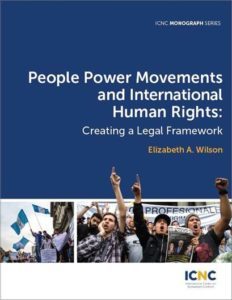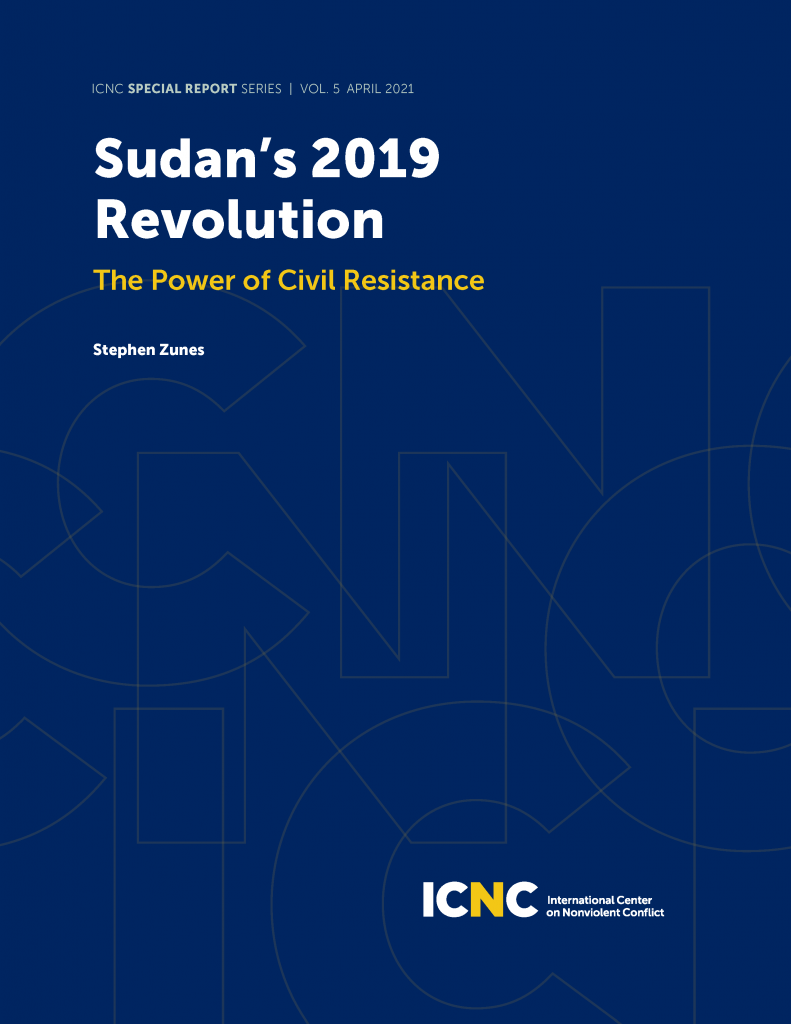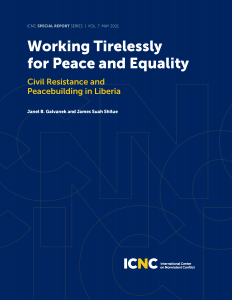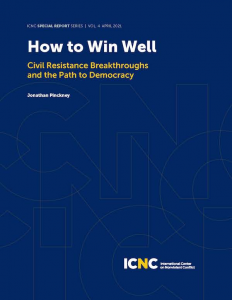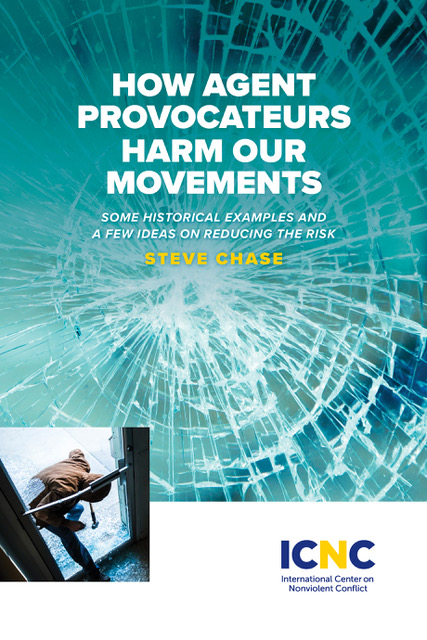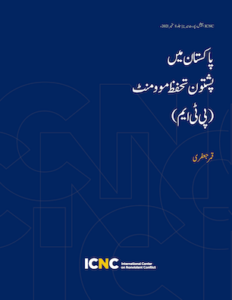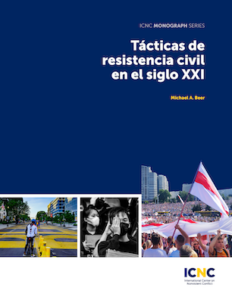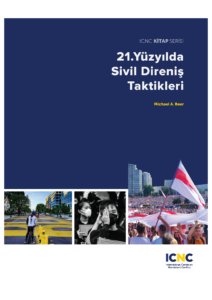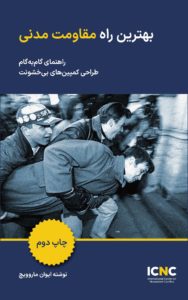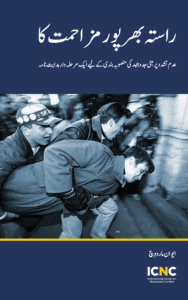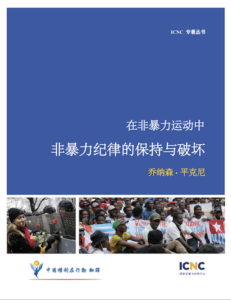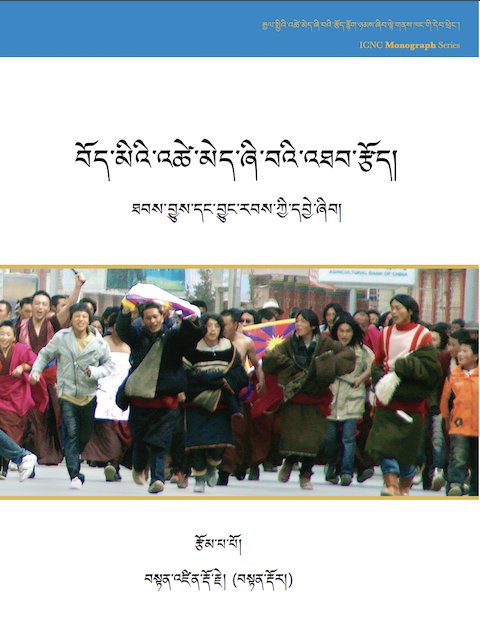ICNC Press and Publications
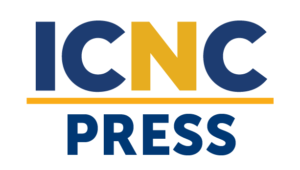
ICNC started its own press to support extensive circulation of free or low-cost resources about civil resistance—both original/in-house and externally-sourced texts—for a diverse international readership. Since 2015, we have published a number of works including:
- The ICNC Monograph Series, which consists of commissioned research that is written to reach practitioner communities
- The ICNC Special Report Series, which draws on cutting-edge research to cover topics pertinent to ongoing policy discussions and practitioner debates
- Cutting edge resources for practitioners around the world
- Important books and translations that might otherwise fall out of print
All ICNC Press publications can be downloaded for free and their print copies are made available for purchase at the lowest possible price via Amazon.
If you are interested in publishing opportunities with ICNC, contact us at icnc@nonviolent-conflict.org.
What's New
All Rise: Judicial Resistance in Poland
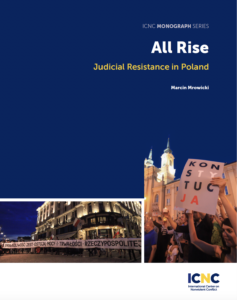 By Marcin Mrowicki
By Marcin Mrowicki
Publication Date: September 2024
Free Download | Purchase a print copy.
This monograph investigates the strategic and organized resistance of Polish judges against the authoritarian encroachments on judicial independence by the ruling Law and Justice (PiS) party from 2015 to 2023. Under the leadership of Jarosław Kaczyński, PiS systematically targeted key judicial institutions like the Constitutional Tribunal and the Supreme Court, implementing reforms to undermine judicial autonomy. This assault sparked an unprecedented resistance movement among Polish judges, who employed legal and extralegal tactics to defend the rule of law.
Le pouvoir du peuple dans un monde de péril
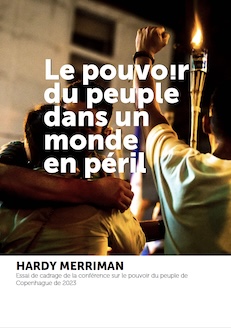 By Hardy Merriman
By Hardy Merriman
Publication Date: July 2024
Free Download
This is the French translation of the framing essay for the 2023 Copenhagen People Power Conference.
It outlines the three interrelated crises of rising authoritarianism, climate change, and violent conflict and articulates the essential role that popular nonviolent movements play in addressing each of them.
New Blood: How Youth in Zambia Are Reclaiming Politics
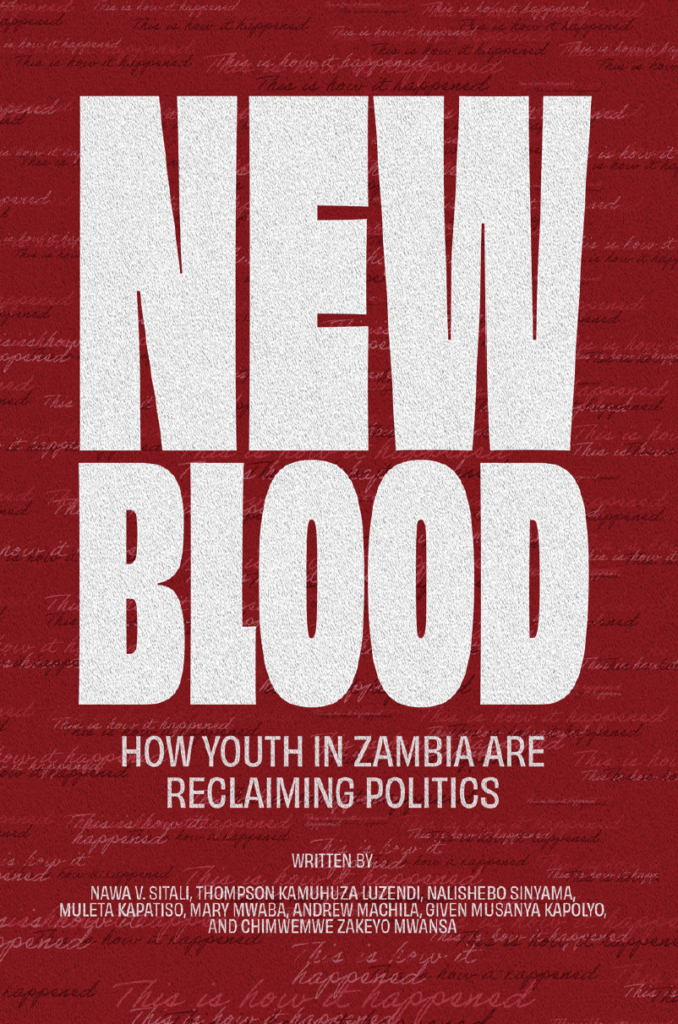 By Nawa V. Sitali, Thompson Kamuhuza Luzendi, Nalishebo Sinyama, Muleta Kapatiso, Mary Mwaba, Andrew Machila, Given Musanya Kapolyo, and Chimwemwe Zakeyo Mwansa
By Nawa V. Sitali, Thompson Kamuhuza Luzendi, Nalishebo Sinyama, Muleta Kapatiso, Mary Mwaba, Andrew Machila, Given Musanya Kapolyo, and Chimwemwe Zakeyo Mwansa
Publication Date: September 2023
Download: English | Spanish
In 2018, Zambia grappled with political turmoil, a stifled democratic process, and marginalized youth voices. Physical violence among youth from different political factions was a hard reality. Amid this chaos, two friends from opposing parties began the Youth4Parliament (Y4P) movement, igniting a transformation that would reshape Zambia’s political landscape.
Discover how Y4P’s pioneering spirit united young activists across party lines, inspiring a historic shift in the country’s politics. From fostering youth leaders to run for office to mobilizing youth to vote and join an unprecedented emergence of social movements, Y4P’s journey is a testament to the power of youth determination.
This is the story of Youth4Parliament’s first few years—their challenges and victories—told in their own voices. But this book is more than a recounting of their journey; it’s a guidebook for changemakers.
We Need People Power to Address a World in Peril
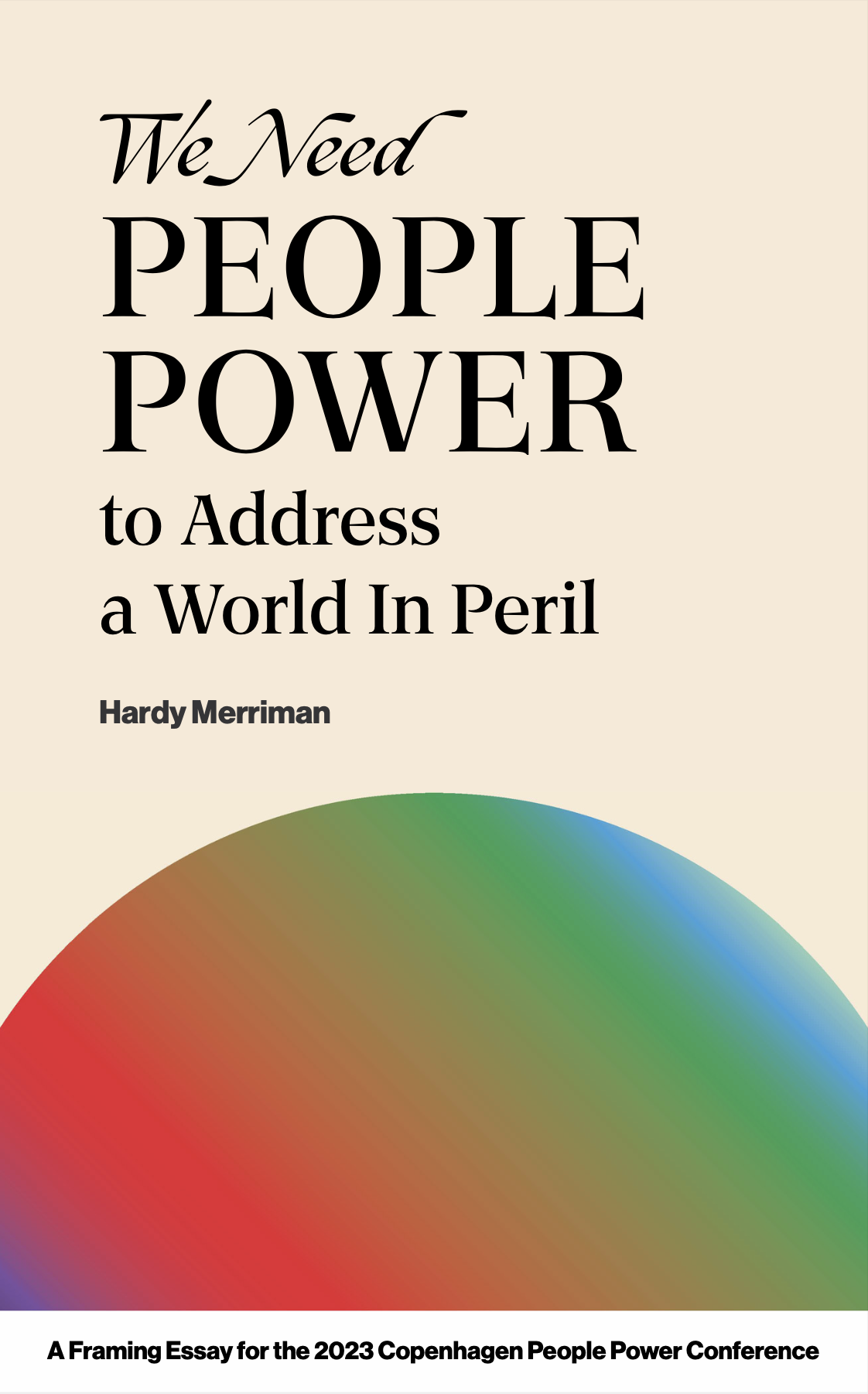 By Hardy Merriman
By Hardy Merriman
Publication Date: September 2023
Free Download: English | French
Purchase a Print Copy
This is the framing essay for the 2023 Copenhagen People Power Conference.
It outlines the three interrelated crises of rising authoritarianism, climate change, and violent conflict and articulates the essential role that popular nonviolent movements play in addressing each of them.
Fostering a Fourth Democratic Wave: A Playbook for Countering the Authoritarian Threat
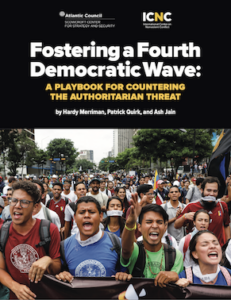 By Hardy Merriman, Patrick Quirk & Ash Jain
By Hardy Merriman, Patrick Quirk & Ash Jain
Publication Date: March 2023
Free Download
Purchase a Print Copy
Purchase an e-book (Nook | Kindle)
A powerful autocratic wave is sweeping the globe. Over the last 17 years, no country remains untouched.
Fostering a Fourth Democratic Wave builds on a growing body of literature that finds that civil resistance movements—using tactics such as strikes, boycotts, civil disobedience, and a range of other nonviolent tactics—are one of the most powerful forces for democracy worldwide and therefore are central to countering the authoritarian threat.
It advances a three-part strategy to do so by:
1. Proposing new approaches and tools to support civil resistance movements.
2. Advancing a new international norm — the “Right to Assistance” to pro-democracy movements.
3. Outlining strategic and tactical options to constrain authoritarian regimes and drive up the cost of their repression.
See the promotional video below:
Prison Hunger Strikes in Palestine: A Strategic Perspective
By Malaka Shwaikh & Rebecca Ruth Gould
Publication Date: January 2023
Free Download
Purchase a Print Copy
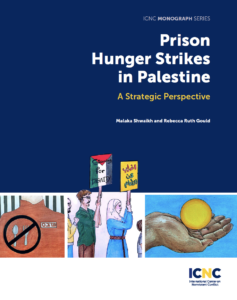 This publication is the first major transnational examination of prison hunger strikes. While focusing on Palestine, the research is enriched by extensive interviews and conversations with South African, Kurdish, Irish, and British ex-prisoners and hunger strikers. This study reveals in unprecedented detail how prison hunger strikes achieve monumental feats of resistance through the weaponization of lives.
This publication is the first major transnational examination of prison hunger strikes. While focusing on Palestine, the research is enriched by extensive interviews and conversations with South African, Kurdish, Irish, and British ex-prisoners and hunger strikers. This study reveals in unprecedented detail how prison hunger strikes achieve monumental feats of resistance through the weaponization of lives.
How do prison hunger strikers achieve demands? How do they stay connected with the outside world in a space that is designed to cut them off from that world? And why would a prisoner put their lives at risk by refusing to eat or, at times, drink? This research shows that sometimes prisoners’ need for dignity (karamah) and freedom (hurriya) trump their hunger pangs and thirst.
Prison Hunger Strikes in Palestine evaluates the process of hunger striking, including the repressive actions prisoners encounter, and the negotiation process. It analyzes differences and similarities between individual and collective strikes, and evaluates the role and impact of solidarity actions from outside the prison walls.
The work’s critical and grassroots understanding of prison hunger strikes fully centers the voices of hunger strikers. The analysis results in actionable takeaways that will be as useful to prison activists as they will be to their allies around the world.
Monographs

The ICNC Monograph Series aims to bridge the gap between research and practice. Drawing on scholarly literature and high quality analytical and empirical analyses equal to that of a serious academic publication, monographs aim to enrich public discourse by expanding scientific knowledge in the field of civil resistance and providing general and specific recommendations for practitioners such as activists, organizers, journalists, and members of INGOs and the policy community. For more information about this series, and/or if you would like to write a monograph, click here.
All Rise: Judicial Resistance in Poland
 By Marcin Mrowicki
By Marcin Mrowicki
Publication Date: September 2024
Free Download | Purchase a print copy.
This monograph investigates the strategic and organized resistance of Polish judges against the authoritarian encroachments on judicial independence by the ruling Law and Justice (PiS) party from 2015 to 2023. Under the leadership of Jarosław Kaczyński, PiS systematically targeted key judicial institutions like the Constitutional Tribunal and the Supreme Court, implementing reforms to undermine judicial autonomy. This assault sparked an unprecedented resistance movement among Polish judges, who employed legal and extralegal tactics to defend the rule of law.
Prison Hunger Strikes in Palestine: A Strategic Perspective
By Malaka Shwaikh & Rebecca Ruth Gould
Publication Date: January 2023
Free Download
Purchase a Print Copy
 This publication is the first major transnational examination of prison hunger strikes. While focusing on Palestine, the research is enriched by extensive interviews and conversations with South African, Kurdish, Irish, and British ex-prisoners and hunger strikers. This study reveals in unprecedented detail how prison hunger strikes achieve monumental feats of resistance through the weaponization of lives.
This publication is the first major transnational examination of prison hunger strikes. While focusing on Palestine, the research is enriched by extensive interviews and conversations with South African, Kurdish, Irish, and British ex-prisoners and hunger strikers. This study reveals in unprecedented detail how prison hunger strikes achieve monumental feats of resistance through the weaponization of lives.
How do prison hunger strikers achieve demands? How do they stay connected with the outside world in a space that is designed to cut them off from that world? And why would a prisoner put their lives at risk by refusing to eat or, at times, drink? This research shows that sometimes prisoners’ need for dignity (karamah) and freedom (hurriya) trump their hunger pangs and thirst.
Prison Hunger Strikes in Palestine evaluates the process of hunger striking, including the repressive actions prisoners encounter, and the negotiation process. It analyzes differences and similarities between individual and collective strikes, and evaluates the role and impact of solidarity actions from outside the prison walls.
The work’s critical and grassroots understanding of prison hunger strikes fully centers the voices of hunger strikers. The analysis results in actionable takeaways that will be as useful to prison activists as they will be to their allies around the world.
Resource Mobilization in Palestinian Nonviolent Campaigns
By: Mahmoud Soliman
Date of Publication: August 2022
Free Download
Purchase a Print Copy
Purchase an e-book (coming soon)
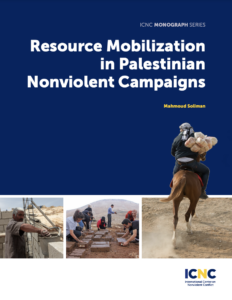 This monograph analyzes how Palestinian grassroots activists, popular resistance committees (PRCs), and popular resistance networks (PRNs) secured, managed, and used material and non-material resources to wage sustained and successful nonviolent campaigns in Area C of the occupied West Bank.
This monograph analyzes how Palestinian grassroots activists, popular resistance committees (PRCs), and popular resistance networks (PRNs) secured, managed, and used material and non-material resources to wage sustained and successful nonviolent campaigns in Area C of the occupied West Bank.
A comprehensive analytical framework is developed to capture a variety of resources and to better understand the role that different types of resources have in the launching, conducting, and outcomes of a campaign. This framework is then used to analyze three nonviolent campaigns led by Palestinian communities living under occupation, highlighting how the Palestinian activists managed to secure, administer, and deploy a diverse range of material and non-material resources to support their campaigns.
This study offers specific recommendations and lessons learned from the investigated cases for various actors—including activists, allies that want to support grassroots campaigns, and researchers interested in furthering the study of the role and impact of resources in nonviolent organizing and their successful acquisition by local organizers.
Civil Resistance Against Climate Change
By: Robyn Gulliver, Kelly Fielding, and Winnifred Louis
Date of Publication: September 2021
Free Download
Purchase a Print Copy 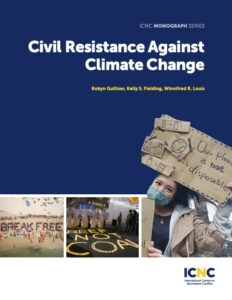
Purchase an e-book (Nook | Kindle)
Transnational movements using nonviolent resistance tactics to demand action on climate change have emerged from a foundation of decades of persistent and diverse environmental activism. What are the features of this nonviolent resistance that differentiate it from previous activism? What response is this resistance prompting from political and financial entities? To investigate these questions this monograph combines a large-scale longitudinal data set on climate activism in Australia with two case studies of nonviolent resistance against corporations.
The study offers key lessons for a range of individuals and groups, from climate activists and civil society organizations to academics and others interested in supporting nonviolent action against climate change. In doing so, it addresses major gaps in our understanding of the effectiveness of civil resistance against climate change and the potential this resistance holds to prompt urgent action.
The Impact of Nonviolent Resistance on the Peaceful Transformation of Civil War
By: Luke Abbs
Date of Publication: August 2021
Free Download
Purchase a Print Copy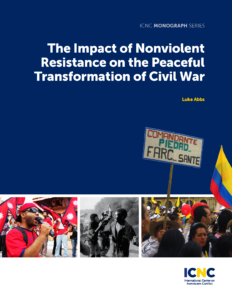
Purchase an e-book (Nook | Kindle)
In recent years, a burgeoning literature has explored the strategic advantages of using nonviolent resistance to achieve positive political outcomes, such as regime change and democratization. Yet, despite one-fifth of large-scale nonviolent campaigns occurring during the course of a civil war, we know little about the affect nonviolent resistance might have on the transformation of armed conflict. Bringing together the previously isolated literatures on nonviolent resistance and peacebuilding, this manuscript explores how nonviolent resistance can aid peacebuilding efforts that transform ongoing armed conflict, using data on all civil wars episodes since 1945. The finding show nonviolent resistance does have a positive impact on the resolution of armed conflict, with evidence deriving from a Large-N statistical analysis, out-of-sample prediction and structured-focused case studies.
How Social Trust Shapes Civil Resistance: Lessons from Africa
By: Jacob S. Lewis
Date of Publication: August 2021
Free Download
Purchase a Print Copy
Purchase an e-book (Nook | Kindle)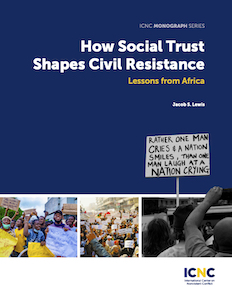
What role does trust play in shaping the outcomes of civil resistance campaigns? Trust has been found to be a critical factor in building political and social capital, encouraging group cohesion, and overcoming collective action problems. Despite this, trust has not been directly addressed by the civil resistance scholarship. This monograph addresses this lacuna by examining how trust shapes – and is shaped by – three levels of mobilization: trust at the individual level, trust within activist groups, and trust across resistance campaigns.
Nonviolent Movements and Material Resources in Northwest Mexico
By: Chris Allan and Scott DuPree
Date of Publication: June 2021
Free Download
Purchase a Print Copy
Purchase an e-book (Nook | Kindle)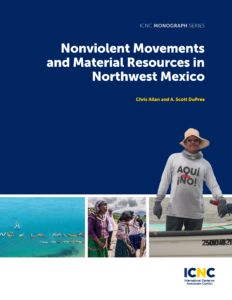
Nonviolent resistance movements operate with few resources and nearly no money. Yet these movements thrive and often succeed. The little external funding for civil society that is available rarely reaches the grassroots groups that are the backbone of these movements. How do they get the material resources they need? This study highlights strategies that are being used effectively by nonviolent movements to mobilize the resources they need to galvanize participation in movement actions and influence both the public and policymakers. Based on the experience of three campaigns in Northwest Mexico over two decades, the research finds that material resources are often mobilized internally in a decentralized way, driven by effective strategic planning and actions. We discuss the strategic choices nonviolent movements make to mobilize resources and how they direct them as situations change, and how outside supporters can provide resources in a constructive way.
Civil Resistance Tactics in the 21st Century
By: Michael Beer
Date of Publication: March 2021
Free Download: English | Farsi | Russian | Spanish | Turkish
Purchase a Print Copy
Purchase e-book (Nook | Kindle)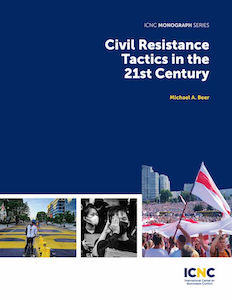
Civil Resistance Tactics in the 21st Century belongs on the bookshelf of anyone who is studying or practicing nonviolent action. It expands on the list of 198 methods of nonviolent action first categorized by Gene Sharp in 1973 book. It also analyzes strengths and weaknesses of Dr. Sharp’s typologies and updates his work by documenting additional methods of nonviolent action and referring to new scholarship from the fields of civil resistance, human rights, and social change. The monograph concludes with a summary of lessons learned and how they are relevant for practitioners, educators, and scholars of civil resistance. Recommendations are made for further application and research.
The Role of External Support in Nonviolent Campaigns: Poisoned Chalice or Holy Grail?
By: Erica Chenoweth & Maria J. Stephan
Date of Publication: February 2021
Free Download
Purchase a Print Copy
Purchase e-book (Nook | Kindle)
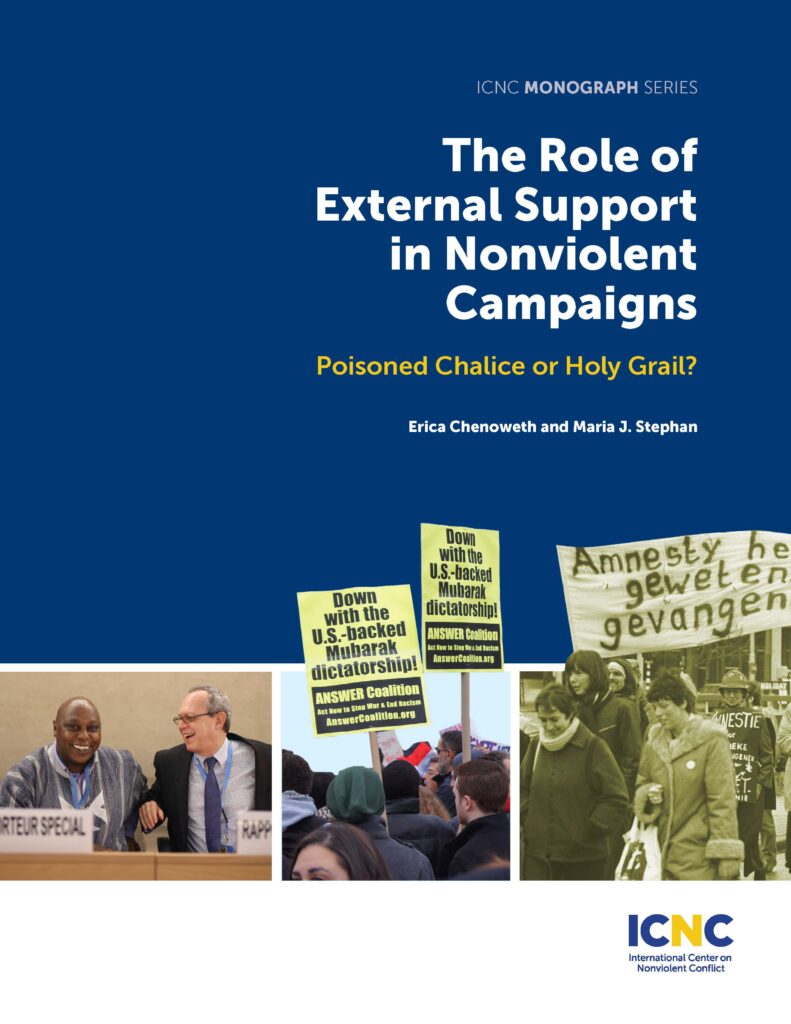 This study assesses different types of external assistance—material and non-material—to civil resistance movements offered by state and non-state actors at different stages: pre-, during and post-conflict periods. It evaluates the impact of specific types of aid, and its timing and provisions by different actor,s on the overall trajectories of civil resistance campaigns and their outcomes.
This study assesses different types of external assistance—material and non-material—to civil resistance movements offered by state and non-state actors at different stages: pre-, during and post-conflict periods. It evaluates the impact of specific types of aid, and its timing and provisions by different actor,s on the overall trajectories of civil resistance campaigns and their outcomes.
Its findings are based on quantitative and qualitative research, including an ICNC-sponsored multi-year research project that examines the effects of different forms of external aid on the outcomes and longer-term impacts of civil resistance campaigns.
When Civil Resistance Succeeds: Building Democracy After Popular Nonviolent Uprisings
By: Jonathan Pinckney
Date of Publication: October 2018
Free Download
Purchase a Print Copy
Purchase e-book (Nook | Kindle)
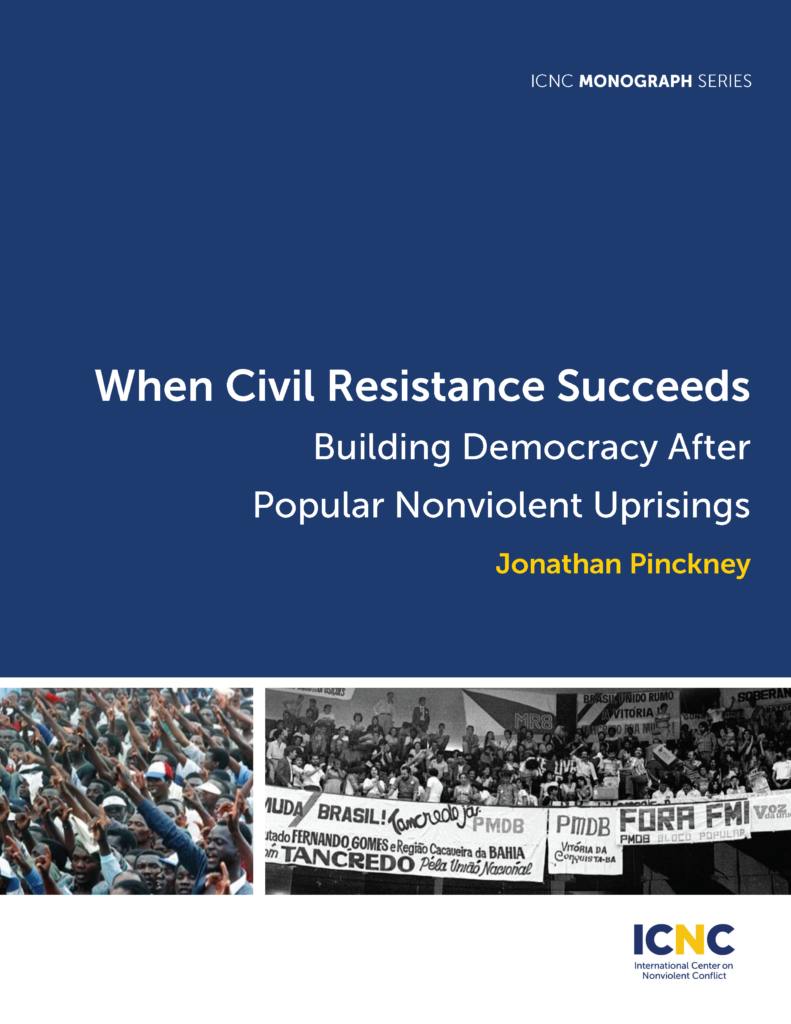 Why do some nonviolent revolutions lead to successful democratization while others fail to consolidate democratic change? And what can activists do to push toward a victory over dictatorship that results in long-term political freedom?
Why do some nonviolent revolutions lead to successful democratization while others fail to consolidate democratic change? And what can activists do to push toward a victory over dictatorship that results in long-term political freedom?
Several studies show that nonviolent revolutions are generally a more positive force for democratization than violent revolutions and top-down political transitions. However, some nonviolent revolutions, such as the Arab Spring revolution in Egypt, do not seem to fit this pattern. This study takes on this puzzle and reveals that the answer lies in large part in the actions of civil society prior to and during transition. Democracy is most likely when activists can keep their social bases mobilized for positive political change while directing that mobilization toward building new political institutions.
Civil Resistance against Coups: A Comparative and Historical Perspective
By: Stephen Zunes
Date of publication: December 2017
Free Download: English | Thai
Purchase a Print Copy
Purchase e-book (Nook | Kindle)
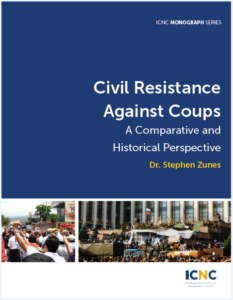 Nations are not helpless if the military decides to stage a coup. On dozens of occasions in recent decades, even in the face of intimidated political leaders and international indifference, civil society has risen up to challenge putschists through large-scale nonviolent direct action and noncooperation. How can an unarmed citizenry mobilize so quickly and defeat a powerful military committed to seizing control of the government? What accounts for the success or failure of nonviolent resistance movements to reverse coups and consolidate democratic gains?
Nations are not helpless if the military decides to stage a coup. On dozens of occasions in recent decades, even in the face of intimidated political leaders and international indifference, civil society has risen up to challenge putschists through large-scale nonviolent direct action and noncooperation. How can an unarmed citizenry mobilize so quickly and defeat a powerful military committed to seizing control of the government? What accounts for the success or failure of nonviolent resistance movements to reverse coups and consolidate democratic gains?
This monograph presents in-depth case studies and analysis intended to improve our understanding of the strategic utility of civil resistance against military takeovers; the nature of civil resistance mobilization against coups; and the role of civil resistance against coups in countries’ subsequent democratization efforts (or failure thereof). It offers key lessons for pro-democracy activists and societies vulnerable to military usurpation of power; national civilian and military bureaucracies; external state and non-state agencies supportive of democracy; and future scholarship on this subject.
People Power Movements and International Human Rights: Creating a Legal Framework
By: Elizabeth A. Wilson
Date of publication: August 2017
Revised: July 2019
Free Download
Purchase a Print Copy
Purchase e-book (Nook | Kindle)
International human rights law did not come into existence top-down, out of the benevolent intentions of states, even though states eventually began to recognize that large-scale human rights abuses could pose a threat to the international order. Rather, it came into existence from the bottom-up efforts of ordinary people in civil society to ally with each other in solidarity and demand their rights, often through organized nonviolent campaigns and movements that pressured elites and powerholders to recognize or grant individual rights (freedom for slaves, women’s rights, labor rights, and children’s rights, to name a few). Unlike international law generally, the real source of international human rights law has been the coordinated, organized and nonviolently forceful efforts of individuals—in other words, what one can refer to as people power.
Making or Breaking Nonviolent Discipline in Civil Resistance Movements
By: Jonathan Pinckney
Date of publication: October 2016
Free Download: English | Chinese | Summary of findings in Farsi
Purchase a Print Copy
Purchase e-book (Nook | Kindle)
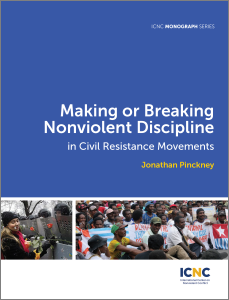 How can we understand when nonviolent movements will stay nonviolent? When are they likely to break down into violence? In this monograph, Jonathan Pinckney analyzes both what promotes and undermines nonviolent discipline in civil resistance movements. Combining quantitative research on thousands of nonviolent and violent actions with a detailed comparison of three relevant case studies of civil resistance during the “Color Revolutions”, Pinckney’s analysis provides important lessons for activists and organizers on the front lines, as well as for practitioners whose work may impact the outcomes of nonviolent struggles. We learn how repression consistently induces violence, as do government concessions. On the flip side, we see that structuring a campaign in an inclusive and non-hierarchical way is conducive to greater nonviolent discipline.
How can we understand when nonviolent movements will stay nonviolent? When are they likely to break down into violence? In this monograph, Jonathan Pinckney analyzes both what promotes and undermines nonviolent discipline in civil resistance movements. Combining quantitative research on thousands of nonviolent and violent actions with a detailed comparison of three relevant case studies of civil resistance during the “Color Revolutions”, Pinckney’s analysis provides important lessons for activists and organizers on the front lines, as well as for practitioners whose work may impact the outcomes of nonviolent struggles. We learn how repression consistently induces violence, as do government concessions. On the flip side, we see that structuring a campaign in an inclusive and non-hierarchical way is conducive to greater nonviolent discipline.
The Power of Staying Put: Nonviolent Resistance to Armed Groups in Colombia
By: Juan Masullo
Date of publication: August 2015
Free download: English | Spanish
Purchase a Print Copy
Purchase e-book (Nook | Kindle)
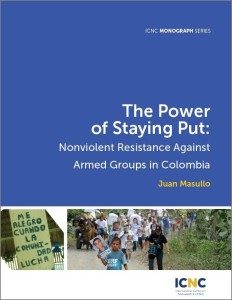 Confronted with civil war, local civilians typically either collaborate with the strongest actor in town or flee the area. Yet civilians are not stuck only with these choices. Collectively defying armed groups by engaging in organized nonviolent forms of noncooperation, self-organization and disruption is another option. This monograph explores this option through sustained and organized civil resistance led by ordinary peasants against state and non-state repressive actors in Colombia’s longstanding civil war: the case of the Peace Community of San José de Apartadó.
Confronted with civil war, local civilians typically either collaborate with the strongest actor in town or flee the area. Yet civilians are not stuck only with these choices. Collectively defying armed groups by engaging in organized nonviolent forms of noncooperation, self-organization and disruption is another option. This monograph explores this option through sustained and organized civil resistance led by ordinary peasants against state and non-state repressive actors in Colombia’s longstanding civil war: the case of the Peace Community of San José de Apartadó.
The Tibetan Nonviolent Struggle: A Strategic and Historical Analysis
By: Tenzin Dorjee
Date of publication: September 2015
Free Download: English | Tibetan
Purchase a Print Copy
Purchase e-book (Nook | Kindle)
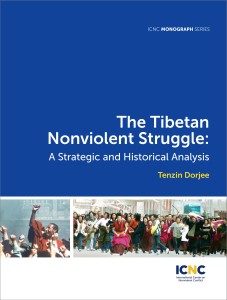 Contrary to a perception—fueled by Chinese propaganda during the 2008 Tibetan uprising that the Tibetan struggle is heading toward extremism—this study shows that the movement for Tibetan freedom has since the 1950s moved toward a tighter embrace of nonviolent resistance. The study traces this evolution, analyzing the central themes, purposes, challenges, strategies, tactics and impacts of three major Tibetan uprisings over the past six decades. Tibetans are now waging a quiet, slow-building nonviolent movement, centered on strengthening the Tibetan national and cultural fabric via what the author refers to as “transformative resistance.” This is happening in an immensely repressive political environment, which shows that there is a way to mobilize people power against even one of the most ruthless regimes in the world.
Contrary to a perception—fueled by Chinese propaganda during the 2008 Tibetan uprising that the Tibetan struggle is heading toward extremism—this study shows that the movement for Tibetan freedom has since the 1950s moved toward a tighter embrace of nonviolent resistance. The study traces this evolution, analyzing the central themes, purposes, challenges, strategies, tactics and impacts of three major Tibetan uprisings over the past six decades. Tibetans are now waging a quiet, slow-building nonviolent movement, centered on strengthening the Tibetan national and cultural fabric via what the author refers to as “transformative resistance.” This is happening in an immensely repressive political environment, which shows that there is a way to mobilize people power against even one of the most ruthless regimes in the world.
Special Reports
Dollars and Dissent: Donor Support for Grassroots Organizing and Nonviolent Movements
By: Benjamin Naimark-Rowse
Date of Publication: September 2022
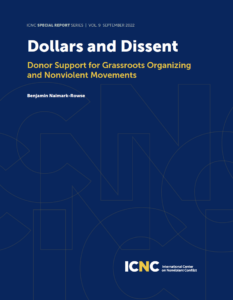 Free Download
Free Download
Around the world, more people than ever before are using nonviolent collective action to secure rights, achieve justice, and build democracy. This strategy has been twice as effective at attaining these goals than has violent action. Yet despite this, from 2011 to 2018, public charities and private foundations gave only three percent of their total human rights funding to support nonviolent collective action.
Drawing on in-depth interviews and surveys with donors and grantees, this report outlines trends in donor support and details how donors’ values, organizational structures, and perceptions of risk affect their support for the work of grassroots organizers and nonviolent social movements. Furthermore, this report assists donors seeking to deepen their understanding of whether, when, where, and how to provide this support.
The Pashtun Protection Movement (PTM) in Pakistan
By: Qamar Jafri
Date of Publication: September 2021
Free Download: English | Urdu
Purchase a Print Copy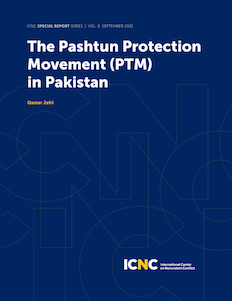
Purchase an e-book (Nook | Kindle)
The Pashtun Protection Movement (PTM) is a youth-led nonviolent resistance campaign for human rights for the Pashtun people in northwestern Pakistan. This movement is reminiscent of Pashtun historical icon Bacha Khan’s organizing nonviolent action for justice in Pakistan’s past. How are these young Pashtuns differentiating themselves from violent religious extremists (e.g. Taliban Movement) and resisting government repression and mistreatment through nonviolent resistance activities? How do they develop and use nonviolent strategies and tactics in their protests and actions? How do they engage supporters and opponents of the movement? How do they manage funding and media coverage of their activities? The study seeks to answer these and other questions questions via relevant field research and data collection.
Sudan’s 2019 Revolution: The Power of Civil Resistance
By: Stephen Zunes
Date of Publication: May 2021
Free Download
Purchase a Print Copy
Purchase e-book (Nook | Kindle)
The Sudanese revolution began in December 2018 with a series of strikes, protests, and other acts of civil resistance taking place throughout the country. In February 2019, dictatorial president Omar al-Bashir declared a state of emergency and dissolved the national and regional governments, strengthening direct rule by military and intelligence officers. Massive protests resumed in early April and the military staged a coup, removing al-Bashir from power after a 30-year rule and assuming power as the Transitional Military Council. Pro-democracy activists demanded they turn over power to a civilian-led interim government with protests, along with negotiations, continued. On June 3, security forces massacred 128 people and detained and abused hundreds of detainees. Pro-democracy groups responded with a general strike and increased protests. Negotiations resumed and an agreement was signed in August formally transferring the government to civilian-led bodies.
This study interviews key activists in the movement as well as journalists and scholars who chronicled it and key civil society groups which led the struggle. This qualitative research takes place primarily in Khartoum and Omdurman, the country’s two largest cities.
Working Tirelessly for Peace and Equality: Civil Resistance and Peacebuilding in Liberia
By Janel B. Galvanek and James Suah Shilue
Date of Publication: May 2021
Free Download
Purchase a Print Copy
Purchase e-book (Nook | Kindle)
From the establishment of the Liberian state in 1848, the Americo-Liberian settlers—descendants of freed slaves from the USA—imposed a form of indirect rule over the indigenous Liberian population that oppressed, marginalized and exploited the majority of the population. This treatment of the native population became increasingly unsustainable, and in 1980 the settler government was overthrown. A 10-year dictatorship was followed by a violent civil war that lasted until 2003. Using the framework developed by Veronique Dudouet in her 2017 ICNC Special Report, Powering to Peace: Integrating Civil Resistance and Peacebuilding Strategies, this case study examines the methodologies and approaches of the various actors involved in civil resistance and peacebuilding throughout the various phases of conflict in Liberia, from a period of latent conflict to the post-settlement phase after 2003. Many different actors in Liberia pursued strategies of peacebuilding and civil resistance simultaneously, which led to the complementarity of their work and increased the impact they had on both political and civic reform, as well as on the ultimate peace process. The case study takes an in-depth look at the impact that the strategies had on each other in their common pursuit of peace and justice in Liberia.
From the Hills to the Streets to the Table: Civil Resistance and Peacebuilding in Nepal
By Ches Thurber and Subindra Bogati
Date of Publication: April 2021
Free Download
Purchase a Print Copy
Purchase e-book (Nook | Kindle)
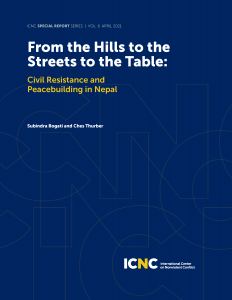 From 1996 until 2006 Nepal experienced a civil war that resulted in an estimated 17,000 casualties. Remarkably, the conflict ended when Maoist insurgents forged an agreement with the country’s political parties to jointly launch a civil resistance campaign to oust the King. The civil resistance campaign succeeded in overthrowing the King, the former rebels have been integrated into normal democratic politics—even holding the premiership on multiple occasions—and Nepal has not seen a reversion to large-scale violence. However, many of the social tensions that initiated the conflict still have not been resolved. Protests are a regular occurrence and there has been a proliferation of armed groups in Nepal’s southern plains and Western hills. What caused the Maoists to take arms? How were they convinced to transition to civil resistance? What accounts for the success and failures of the subsequent peace process?
From 1996 until 2006 Nepal experienced a civil war that resulted in an estimated 17,000 casualties. Remarkably, the conflict ended when Maoist insurgents forged an agreement with the country’s political parties to jointly launch a civil resistance campaign to oust the King. The civil resistance campaign succeeded in overthrowing the King, the former rebels have been integrated into normal democratic politics—even holding the premiership on multiple occasions—and Nepal has not seen a reversion to large-scale violence. However, many of the social tensions that initiated the conflict still have not been resolved. Protests are a regular occurrence and there has been a proliferation of armed groups in Nepal’s southern plains and Western hills. What caused the Maoists to take arms? How were they convinced to transition to civil resistance? What accounts for the success and failures of the subsequent peace process?
This publication analyzes these questions by utilizing the framework developed by Veronique Dudouet in her 2017 ICNC Special Report, Powering to Peace: Integrating Civil Resistance and Peacebuilding Strategies. We trace the development of conflict from a period of latent conflict with high levels of horizontal inequalities and structural violence to an outbreak of overt, but initially violent conflict. We then illustrate how a transition from civil war to civil resistance was made possible and led to a successful conflict settlement. However, flaws in the conflict settlement process have produced a turbulent post-settlement process, one that falls short of the goals of reconciliation, transitional justice, and sustainable peace.
How to Win Well: Civil Resistance Breakthroughs and the Path to Democracy
By: Jonathan Pinckney
Date of Publication: April 2021
Free Download
Purchase a Print Copy
Purchase e-book (Nook | Kindle)
How do nonviolent resistance movements oust dictators? What effects do these different ways of ousting dictators have on countries’ long-term political trajectories? In this special report, I trace the pathways through which civil resistance movements of the last seventy years have removed dictatorships and the impact of these different pathways on levels of democratic progress. I find that pathways that involve campaign initiative, institutional mechanisms, and building cooperative norms – particularly negotiated transitions – tend to lead to the highest levels of democratic progress.
Preventing Mass Atrocities: From a Responsibility to Protect (RtoP) to a Right to Assist (RtoA) Campaigns of Civil Resistance
By Peter Ackerman and Hardy Merriman, May 2019
Free Download: English | Arabic | French | Spanish
Purchase a Print Copy
Purchase e-book (Nook | Kindle)
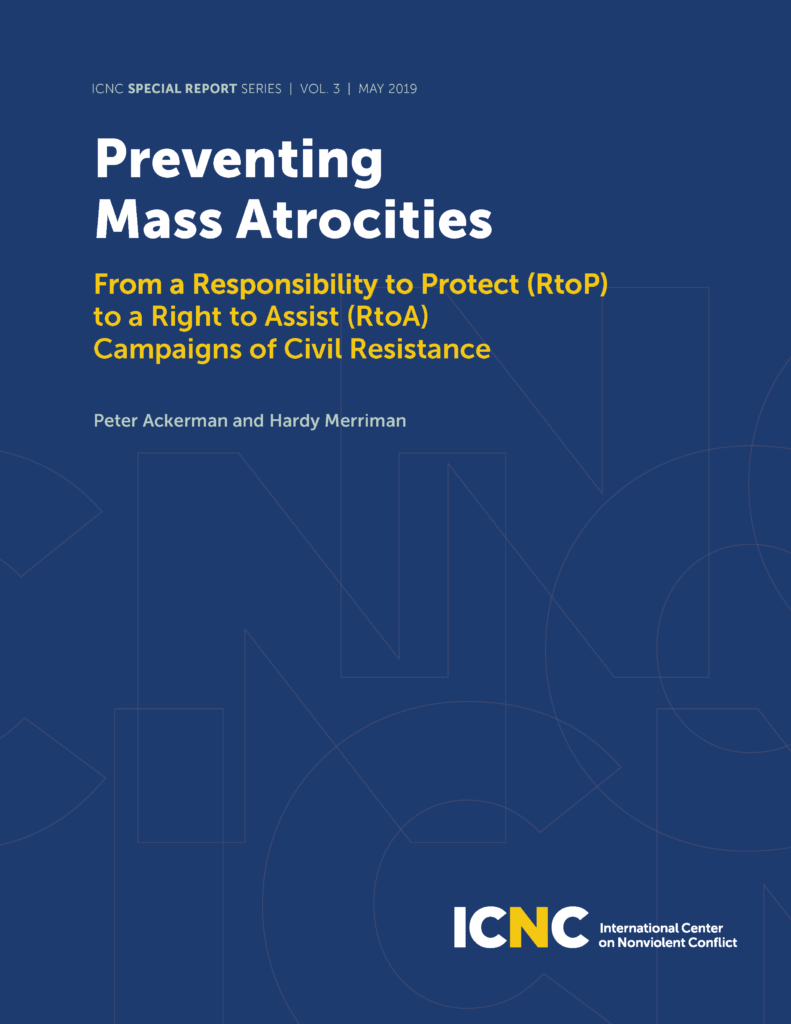 Events of the last decade demand new approaches to atrocity prevention that are adaptable, innovative and independent of a state-centered doctrine. With the aim of reducing risk factors such as civil war, we argue for a new normative framework called The Right to Assist (RtoA), which could strengthen international coordination and support for nonviolent civil resistance campaigns demanding rights, freedom and justice against non-democratic rule.
Events of the last decade demand new approaches to atrocity prevention that are adaptable, innovative and independent of a state-centered doctrine. With the aim of reducing risk factors such as civil war, we argue for a new normative framework called The Right to Assist (RtoA), which could strengthen international coordination and support for nonviolent civil resistance campaigns demanding rights, freedom and justice against non-democratic rule.
RtoA would: 1) engage a wide range of stakeholders such as NGOs, states, multilateral institutions and others; 2) bolster various factors of resilience against state fragility; and 3) incentivize opposition groups to sustain commitment to nonviolent strategies of change. The adoption of this doctrine can reduce the probability of violent conflict that significantly heightens atrocity risk, while increasing the prospects for constructive human development.
Nonviolent Resistance and Prevention of Mass Killings During Popular Uprisings
By: Evan Perkoski and Erica Chenoweth
Date of Publication: April 2018
Free Download
Purchase a Print Copy
Purchase e-book (Nook | Kindle)
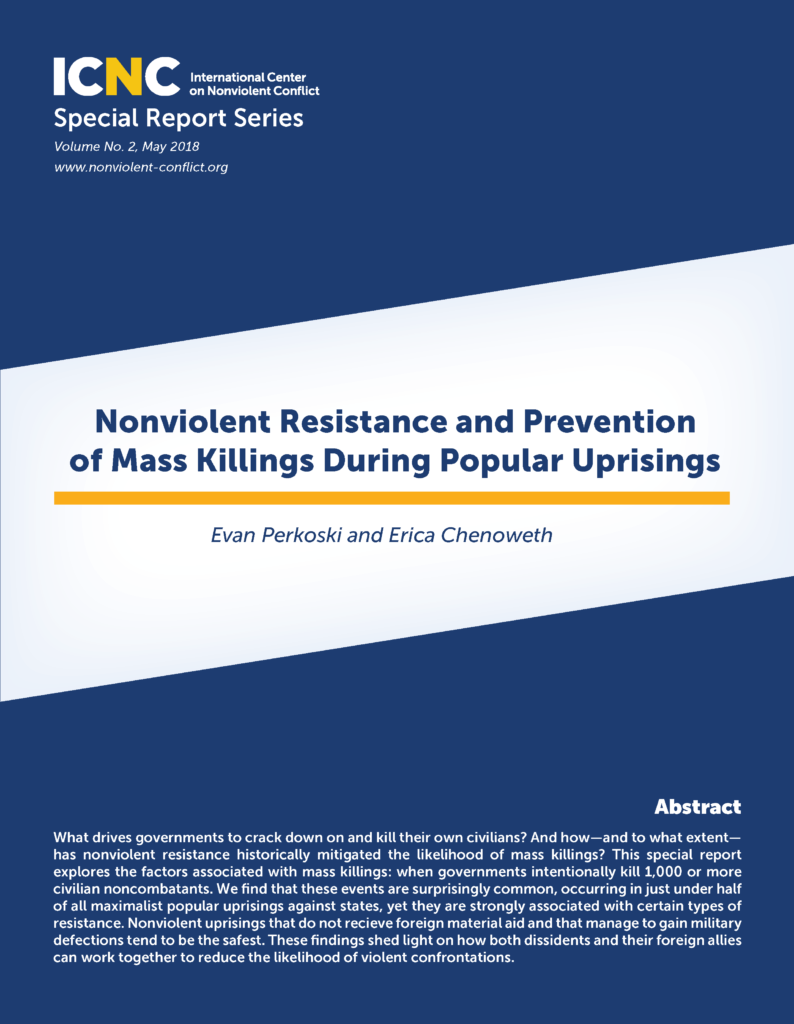 What drives governments to crack down on and kill their own civilians? And how—and to what extent—has nonviolent resistance historically mitigated the likelihood of mass killings? This special report explores the factors associated with mass killings: when governments intentionally kill 1,000 or more civilian noncombatants. We find that these events are surprisingly common, occurring in just under half of all maximalist popular uprisings against states, yet they are strongly associated with certain types of resistance. Nonviolent uprisings that do not receive foreign material aid and that manage to gain military defections tend to be the safest. These findings shed light on how both dissidents and their foreign allies can work together to reduce the likelihood of violent confrontations.
What drives governments to crack down on and kill their own civilians? And how—and to what extent—has nonviolent resistance historically mitigated the likelihood of mass killings? This special report explores the factors associated with mass killings: when governments intentionally kill 1,000 or more civilian noncombatants. We find that these events are surprisingly common, occurring in just under half of all maximalist popular uprisings against states, yet they are strongly associated with certain types of resistance. Nonviolent uprisings that do not receive foreign material aid and that manage to gain military defections tend to be the safest. These findings shed light on how both dissidents and their foreign allies can work together to reduce the likelihood of violent confrontations.
Powering to Peace: Integrated Civil Resistance and Peacebuilding Strategies
By: Véronique Dudouet, Berghof Foundation
Date of Publication: April 2017
Free Download: English | French
Purchase copies: English | French
Purchase e-book (Nook | Kindle)
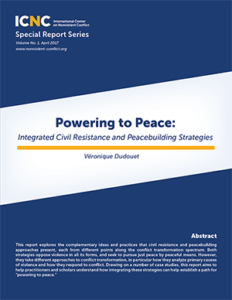 This report explores the complementary ideas and practices that civil resistance and peacebuilding approaches present, each from different points along the conflict transformation spectrum. Both strategies oppose violence in all its forms, and seek to pursue just peace by peaceful means. However, they take different approaches to conflict transformation, in particular how they analyze primary causes of violence and how they respond to conflict. Drawing on a number of case studies, this report aims to help practitioners and scholars understand how integrating these strategies can help establish a path for “powering to peace.”
This report explores the complementary ideas and practices that civil resistance and peacebuilding approaches present, each from different points along the conflict transformation spectrum. Both strategies oppose violence in all its forms, and seek to pursue just peace by peaceful means. However, they take different approaches to conflict transformation, in particular how they analyze primary causes of violence and how they respond to conflict. Drawing on a number of case studies, this report aims to help practitioners and scholars understand how integrating these strategies can help establish a path for “powering to peace.”
Resources for Practitioners
How Agent Provocateurs Harm Our Movements: Some Historical Examples and a Few Ideas on Reducing the Risk
By Steve Chase
Date of Publication: November 2021
Free Download: English | Spanish | Turkish
Purchase a Print Copy
Purchase an e-book (Nook | Kindle)
History shows us that peoples’ movements are more likely to succeed when they have unity among supporters, widespread participation, strategic planning, and nonviolent discipline. Unsurprisingly, movement opponents use agent provocateurs—fake activists working undercover—to behave in counterproductive ways that undermine these four keys to success.
Drawing from international examples, and an in-depth case study of the US Black Liberation Movement, this volume explores how agent provocateurs—and agent provocateur-like behavior—make movements smaller, weaker, and easier to defeat. It also offers some ideas for how activists can inoculate their movements against such harms and increase their chances of success.
The Checklist to End Tyranny: How Dissidents Will Win 21st Century Civil Resistance Campaigns
By Peter Ackerman
Date of Publication: October 2021
Free Download: English | Arabic | Chinese | Farsi | French | Korean | Polish | Russian | Spanish | Turkish
Request a Complimentary Paperback
Purchase an e-book (Nook | Kindle)
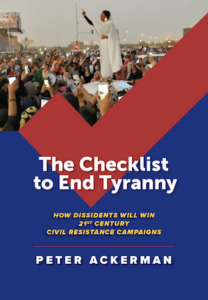 The Checklist to End Tyranny enables dissidents to become more strategic in their thinking and more skillful in their quest to win civil resistance campaigns in the 21st century.
The Checklist to End Tyranny enables dissidents to become more strategic in their thinking and more skillful in their quest to win civil resistance campaigns in the 21st century.
Over a century of data shows that civil resistance campaigns—employing strikes, boycotts, mass protests, and many other nonviolent tactics—are the most powerful means for societies to confront authoritarians and achieve democracy and human rights.
If the world is to have a Fourth Democratic Wave expanding freedom over oppression, then pro-democracy activists waging civil resistance campaigns will lead the way.
Chronicling Civil Resistance: The Journalists’ Guide to Unraveling and Reporting Nonviolent Struggles for Rights, Freedom and Justice
By Deborah Mathis and Hailey Grace Allen
Date of Publication: April 2021
Free Download
Purchase a Print Copy
Purchase e-book (Nook | Kindle)
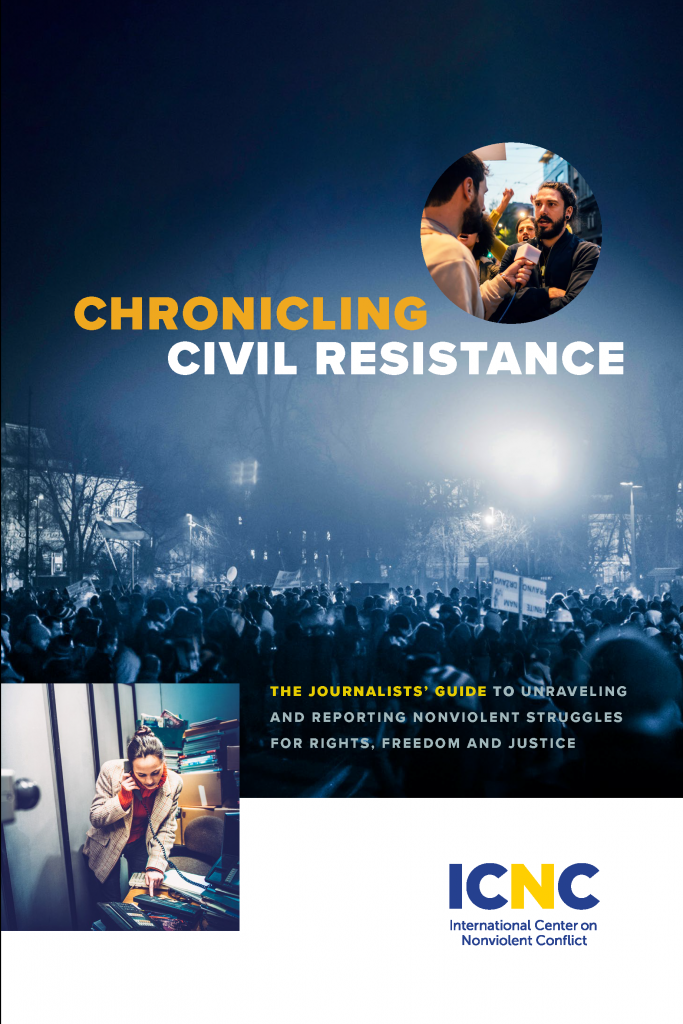 Chronicling Civil Resistance is the first known manual for journalists that addresses the concepts, terms and mechanisms of nonviolent resistance, as well as myths and misconceptions that hinder comprehensive and accurate coverage.
Chronicling Civil Resistance is the first known manual for journalists that addresses the concepts, terms and mechanisms of nonviolent resistance, as well as myths and misconceptions that hinder comprehensive and accurate coverage.
Written by two former journalists with input from one of the world’s leading authorities on civil resistance, Chronicling Civil Resistance explores the unique terminology and concepts that nonviolent movements employ; and it delves into the nuances of nonviolent strategies.
ICNC invites journalists, journalism schools and movement organizers to download the guide for free and share it with others who may benefit from a deeper understanding of civil resistance.
The Path of Most Resistance: A Step-by-Step Guide to Planning Nonviolent Campaigns, Second Edition
By Ivan Marovic
Date of Publication: First edition, 2018 | Second edition, 2021
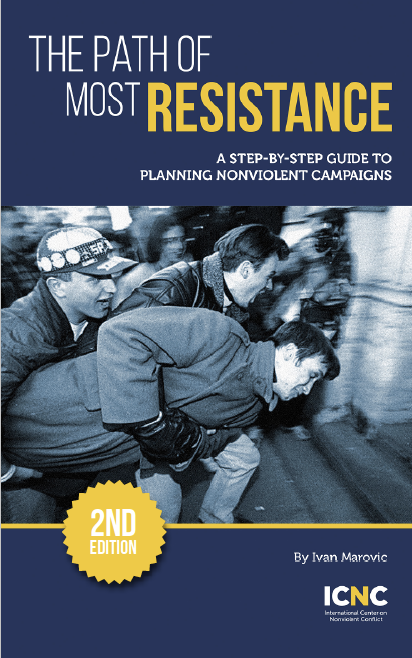
Free Download:
• Second edition: English | Hungarian | Polish | Vietnamese
• First edition: Catalan | French | Portuguese (Brazilian) | Spanish | Urdu
Purchase a Print Copy:
• Second edition: English
• First edition: French | Portuguese (Brazilian) | Spanish
Purchase e-book (Nook | Kindle)
The Path of Most Resistance: A Step-by-Step Guide to Planning Nonviolent Campaigns is a practical guide for activists and organizers of all levels, who wish to grow their resistance activities into a more strategic, fixed-term campaign. It guides readers through the campaign planning process, breaking it down into several steps and providing tools and exercises for each step. Upon finishing the book, readers will have what they need to guide their peers through the process of planning a campaign. This process, as laid out in the guide, is estimated to take about 12 hours from start to finish.
The guide is divided into two parts. The first lays out and contextualizes campaign planning tools and their objectives. It also explains the logic behind these tools, and how they can be modified to better suit a particular group’s context. The second part provides easily reproducible and shareable lesson plans for using each of those tools, as well as explores how to embed the tools in the wider planning process.
The Second Edition released in March 2021 includes chapters on tactics and running a tactical planning workshop, and a Foreword by Hardy Merriman.
Translations
Glossary of Civil Resistance: A Resource for Study and Translation of Key Terms
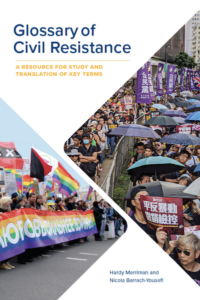 By: Hardy Merriman and Nicola Barrach-Yousefi
By: Hardy Merriman and Nicola Barrach-Yousefi
Date of Publication: January 2021
Free Download: English
Purchase a Copy
Purchase e-book (Nook | Kindle)
List of translated key terms:
Arabic | Armenian | Bangla | Burmese | Chinese | Farsi | French | Haitian Creole | Hebrew | Hindi | Hungarian | Indonesian | Kannada | Khmer | Kirundi | Korean | Kyrgyz | Malayalam | Pashto | Polish | Portuguese (Brazilian) | Portuguese (Continental) | Russian | Sindhi | Spanish | Swahili | Tagalog | Tamil | Telugu | Thai | Turkish | Urdu | Vietnamese
The field of civil resistance is dedicated to understanding how people can fight for rights, freedom, and justice, without the use of violence. This glossary provides definitions and expansive commentary on civil resistance terminology to support sharing of lessons learned and research across different languages.
It is intended to support translation of materials, but non-translators will also find value in it, as a great deal can be learned about the concepts in the field that underlie each term.
Glossary features: Over 150 key terms defined • Term usage in a sentence • Related terms • Commentary and Introduction
Le pouvoir du peuple dans un monde en péril (French)
 We need people power to address a world in peril
We need people power to address a world in peril
A Framing Essay for the 2023 Copenhagen People Power Conference
By Hardy Merriman
The world confronts three grave and interrelated crises. Authoritarianism has been rising worldwide for nearly two decades. Climate change has been increasingly studied and publicly foretold since the 1970s. Rising violent conflict and insecurity are a predictable result of autocratic waves and climate chaos.
In this essay, the essential role of movements countering authoritarianism, climate change, and violent conflict are outlined, with commentary on how institutional allies can better enable and support them.
Ajan Provokatörler Mücadelemize Nasıl Zarar Veriyor (Turkish)
How Agent Provocateurs Harm Our Movements
By Steve Chase
History shows us that peoples’ movements are more likely to succeed when they have unity among supporters, widespread participation, strategic planning, and nonviolent discipline. Unsurprisingly, movement opponents use agent provocateurs—fake activists working undercover—to behave in counterproductive ways that undermine these four keys to success.
Drawing from international examples, and an in-depth case study of the US Black Liberation Movement, this volume explores how agent provocateurs—and agent provocateur-like behavior—make movements smaller, weaker, and easier to defeat. It also offers some ideas for how activists can inoculate their movements against such harms and increase their chances of success.
Тактика Гражданского Сопротивления в XXI Веке (Russian)

Civil Resistance Tactics in the 21st Century
By: Michael Beer
Translation courtesy of PAX.
This monograph opens by introducing terms and fundamental concepts in civil resistance, followed by trends and underlying factors driving the growth of new civil resistance tactics worldwide. It then identifies shortcomings in the current categorization of tactics and offers an expanded list of new tactics as well as a refined framework for cataloging them. Finally, it offers clear takeaways for activists and practitioners, experts, researchers in the field, and others who are interested in supporting nonviolent movements effectively.
The Pashtun Protection Movement (PTM) in Pakistan (Urdu)
The Pashtun Protection Movement (PTM) is a youth-led nonviolent resistance campaign for human rights for the Pashtun people in northwestern Pakistan. This movement is reminiscent of Pashtun historical icon Bacha Khan’s organizing nonviolent action for justice in Pakistan’s past. How are these young Pashtuns differentiating themselves from violent religious extremists (e.g. Taliban Movement) and resisting government repression and mistreatment through nonviolent resistance activities? How do they develop and use nonviolent strategies and tactics in their protests and actions? How do they engage supporters and opponents of the movement? How do they manage funding and media coverage of their activities? The study seeks to answer these and other questions questions via relevant field research and data collection.
การขัดขืนของพลเมือง
เพื่อต่อต้านรัฐประหาร
มุมมองเชิงเปรียบเทียบและมุมมองทางประวัติศาสตร์
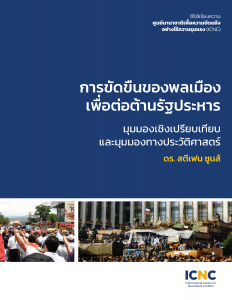
Civil Resistance Against Coups: A Comparative and Historical Perspective — Thai
Nations are not helpless if the military decides to stage a coup. On dozens of occasions in recent decades, even in the face of intimidated political leaders and international indifference, civil society has risen up to challenge putschists through large-scale nonviolent direct action and noncooperation. How can an unarmed citizenry mobilize so quickly and defeat a powerful military committed to seizing control of the government? What accounts for the success or failure of nonviolent resistance movements to reverse coups and consolidate democratic gains?
This monograph presents in-depth case studies and analysis intended to improve our understanding of the strategic utility of civil resistance against military takeovers; the nature of civil resistance mobilization against coups; and the role of civil resistance against coups in countries’ subsequent democratization efforts (or failure thereof). It offers key lessons for pro-democracy activists and societies vulnerable to military usurpation of power; national civilian and military bureaucracies; external state and non-state agencies supportive of democracy; and future scholarship on this subject.
تاکتیک های مقاومت مدنید در سده بیست ویکم
دکتر مایکل اِی. بی
Civil Resist ance Tactics in the 21st Century (Farsi)
ance Tactics in the 21st Century (Farsi)
By: Michael Beer
Civil Resistance Tactics in the 21st Century belongs on the bookshelf of anyone who is studying or practicing nonviolent action. It expands on the list of 198 methods of nonviolent action first categorized by Gene Sharp in 1973 book. It also analyzes strengths and weaknesses of Dr. Sharp’s typologies and updates his work by documenting additional methods of nonviolent action and referring to new scholarship from the fields of civil resistance, human rights, and social change. The monograph concludes with a summary of lessons learned and how they are relevant for practitioners, educators, and scholars of civil resistance. Recommendations are made for further application and research.
Tácticas de resistencia civil en el siglo XXI
AL IGUAL QUE CON LAS ARMAS DE LA VIOLENCIA, las armas de la resistencia civil son numerosas, diversas y están en constante desarrollo. Además de las huelgas, boicots, manifestaciones masivas y otras acciones generalizadas, con frecuencia se crean nuevas tácticas a medida que los participantes de las resistencias civiles se adaptan a las oportunidades, desafíos y tácticas de sus oponentes.
El repertorio en continua expansión de las tácticas noviolentas (algunas veces referidas como métodos por parte de investigadores como Gene Sharp) es una muestra del ingenio y la creatividad de los activistas de todo el mundo. La exploración de nuevas tácticas — el principal propósito de esta monografía— no es simplemente un ejercicio de documentación o clasificación. El estudio de cada método individual abre la puerta a un mundo de historias sobre resistencia civil en distintos lugares y momentos. Cada método ofrece una visión sobre la perseverancia y resiliencia de las personas frente a la represión, lo que demuestra no solo un impulso para luchar por los derechos, la libertad y la justicia, sino también la necesidad de innovación y adaptación al encabezar luchas de resistencia.
21. Yüzyılda Sivil Direnis Taktikleri
Civil Resistance Tactics in the 21st Century (Turkish)
By Michael Beer
Civil Resistance Tactics in the 21st Century belongs on the bookshelf of anyone who is studying or practicing nonviolent action. It expands on the list of 198 methods of nonviolent action first categorized by Gene Sharp in 1973 book. It also analyzes strengths and weaknesses of Dr. Sharp’s typologies and updates his work by documenting additional methods of nonviolent action and referring to new scholarship from the fields of civil resistance, human rights, and social change. The monograph concludes with a summary of lessons learned and how they are relevant for practitioners, educators, and scholars of civil resistance. Recommendations are made for further application and research.
Evitando Atrocidades Masivas: De la Responsabilidad de Proteger (RP) al Derecho de Ayudar (DA) Campañas de resistencia civil
Por: Peter Ackerman y Hardy Merriman
Fecha de publicación: 2020
Descargar: Español | Francés | Inglés | Arábica
Comprar una copia impresa
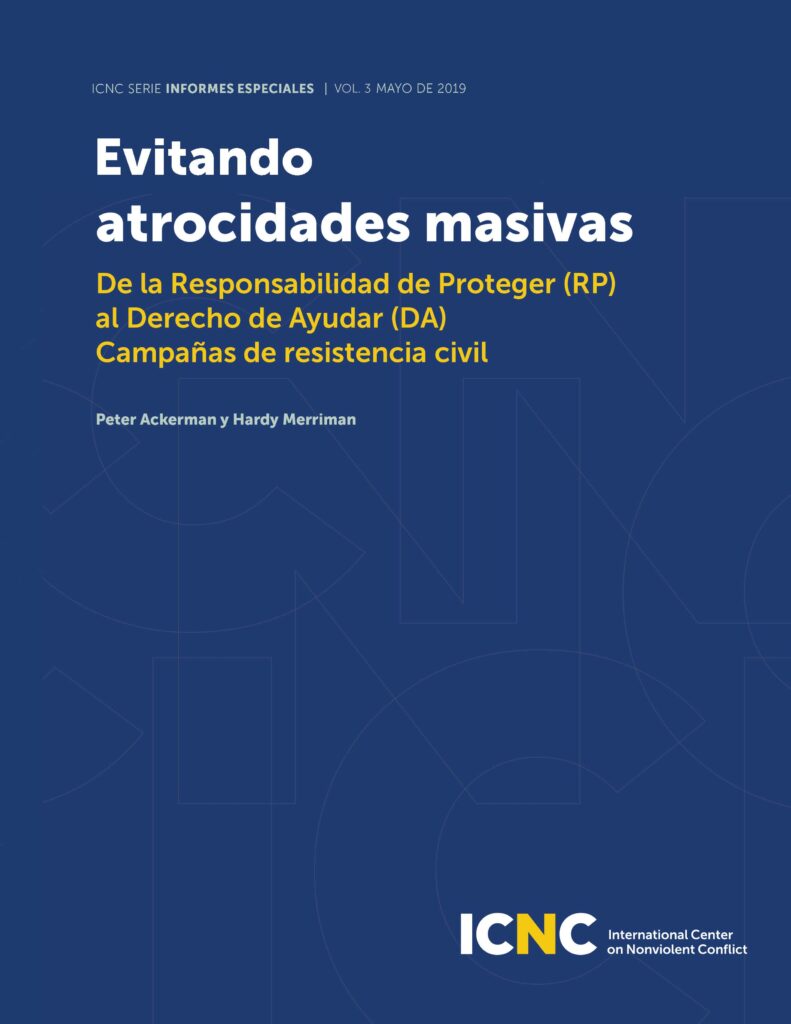 Los eventos de la última década exigen nuevos enfoques para la prevención de atrocidades que sean adaptables, innovadores e independientes de una doctrina centrada en el estado. Con el objetivo de reducir los factores de riesgo como la guerra civil, abogamos por un nuevo marco normativo llamado El derecho a la asistencia (RtoA), que fortalecería la coordinación internacional y el apoyo a las campañas de resistencia civil no violentas que exigen derechos, libertad y justicia contra los no democráticos regla.
Los eventos de la última década exigen nuevos enfoques para la prevención de atrocidades que sean adaptables, innovadores e independientes de una doctrina centrada en el estado. Con el objetivo de reducir los factores de riesgo como la guerra civil, abogamos por un nuevo marco normativo llamado El derecho a la asistencia (RtoA), que fortalecería la coordinación internacional y el apoyo a las campañas de resistencia civil no violentas que exigen derechos, libertad y justicia contra los no democráticos regla.
RtoA: 1) involucraría a una amplia gama de partes interesadas, como ONG, estados, instituciones multilaterales y otros; 2) reforzar varios factores de resistencia contra la fragilidad del estado; y 3) incentivar a los grupos de oposición a mantener el compromiso con las estrategias de cambio no violentas.
La adopción de esta doctrina puede reducir la probabilidad de conflicto violento que aumenta significativamente el riesgo de atrocidad, al tiempo que aumenta las perspectivas de desarrollo humano constructivo.
La Prévention des Atrocités de Masse: De la Responsabilité de Protéger (RdP) au Droit d’assistance (DdA) des Campagnes de Résistance Civile
par: Peter Ackerman et Hardy Merriman
date de publication: Octobre 2020
Télécharger: Française | l’Espagnol | Anglaise | l’Arabe
Acheter une copie papier
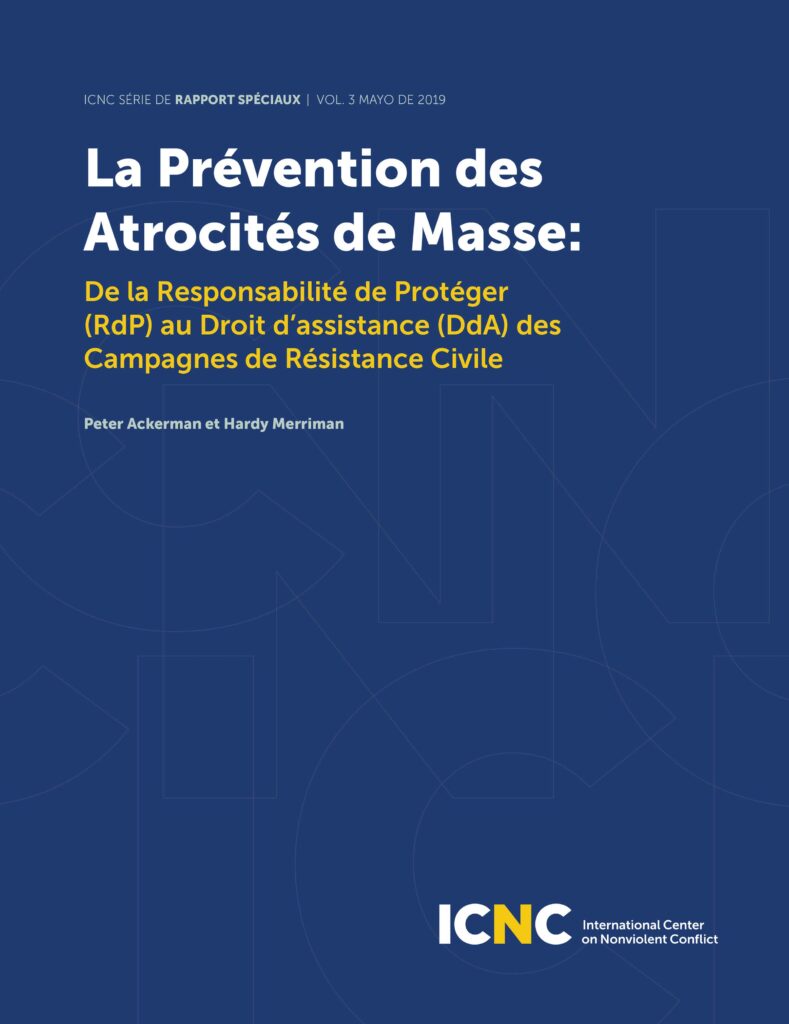 Les événements de la dernière décennie exigent de nouvelles approches en matière de prévention des atrocités, qui soient adaptables, innovantes et indépendantes d’une doctrine centrée sur l’État. Dans le but de réduire les facteurs de risque tels que la guerre civile, nous soutenons un nouveau cadre normatif dénommé Droit d’Assistance (DdA), qui renforcerait la coordination internationale et le soutien aux campagnes de résistance civile nonviolente luttant pour les droits, la liberté et la justice face aux processus non démocratiques.
Les événements de la dernière décennie exigent de nouvelles approches en matière de prévention des atrocités, qui soient adaptables, innovantes et indépendantes d’une doctrine centrée sur l’État. Dans le but de réduire les facteurs de risque tels que la guerre civile, nous soutenons un nouveau cadre normatif dénommé Droit d’Assistance (DdA), qui renforcerait la coordination internationale et le soutien aux campagnes de résistance civile nonviolente luttant pour les droits, la liberté et la justice face aux processus non démocratiques.
Le DdA: 1) impliquerait un large éventail de parties prenantes telles que les ONG, les États, les institutions multilatérales et ainsi de suite; 2) renforcerait divers facteurs de résilience face à la fragilité des États; et 3) inciterait les groupes d’opposition à maintenir leur engagement envers l’utilisation de stratégies de changement nonviolentes.
L’adoption de cette doctrine pourrait permettre de réduire la probabilité d’un conflit violent qui augmenterait considérablement le risque d’atrocité, tout en augmentant les perspectives de développement humain constructif.
من المسؤولية عن الحماية إلى الحق في تقديم المساعدة حملات مقاومة مدنية
بيتر أكرمان وهاردي ماريمان
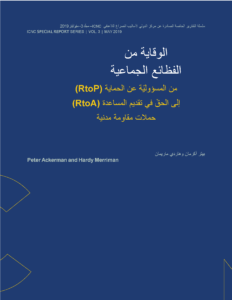 Preventing Mass Atrocities: From a Responsibility to Protest to a Right to Assist Campaigns of Civil Resistance (Arabic)
Preventing Mass Atrocities: From a Responsibility to Protest to a Right to Assist Campaigns of Civil Resistance (Arabic)
By Peter Ackerman and Hardy Merriman
Events of the last decade demand new approaches to atrocity prevention that are adaptable, innovative and independent of a state-centered doctrine. With the aim of reducing risk factors such as civil war, we argue for a new normative framework called The Right to Assist (RtoA), which could strengthen international coordination and support for nonviolent civil resistance campaigns demanding rights, freedom and justice against non-democratic rule.
RtoA would: 1) engage a wide range of stakeholders such as NGOs, states, multilateral institutions and others; 2) bolster various factors of resilience against state fragility; and 3) incentivize opposition groups to sustain commitment to nonviolent strategies of change. The adoption of this doctrine can reduce the probability of violent conflict that significantly heightens atrocity risk, while increasing the prospects for constructive human development.
The Path of Most Resistance: A Step by Step Guide to Planning Nonviolent Campaigns (Farsi)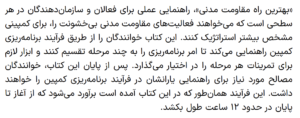
by Ivan Marovic
Date of Publication: March 2021
Download this publication (PDF 4mb)
راستہ بہر پور مزاحت کا: عدم تشدد پر مبنے جدوجہد کے لیے ایک مرحلہ وارہدایت نامہ
The Path of Most Resistance: A Step by Step Guide to Planning Nonviolent Campaigns (Urdu)
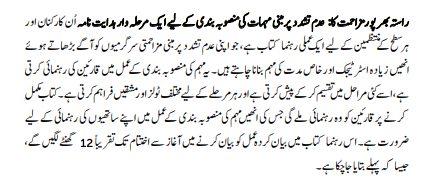 by Ivan Marovic
by Ivan Marovic
Date of Publication: March 2021
Download this publication (PDF 11mb)
Ścieżka Największego Oporu: Przewodnik pokazujący krok po kroku jak planować kampanie oporu społecznego bez użycia przemocy
Scenariusz: Ivan Marovic
Data publikacji: 2020
Pobrać: Polskie | Hiszpański | Angielski | Kataloński | Portugalski (Brazylijski) | Francuski | Urdu
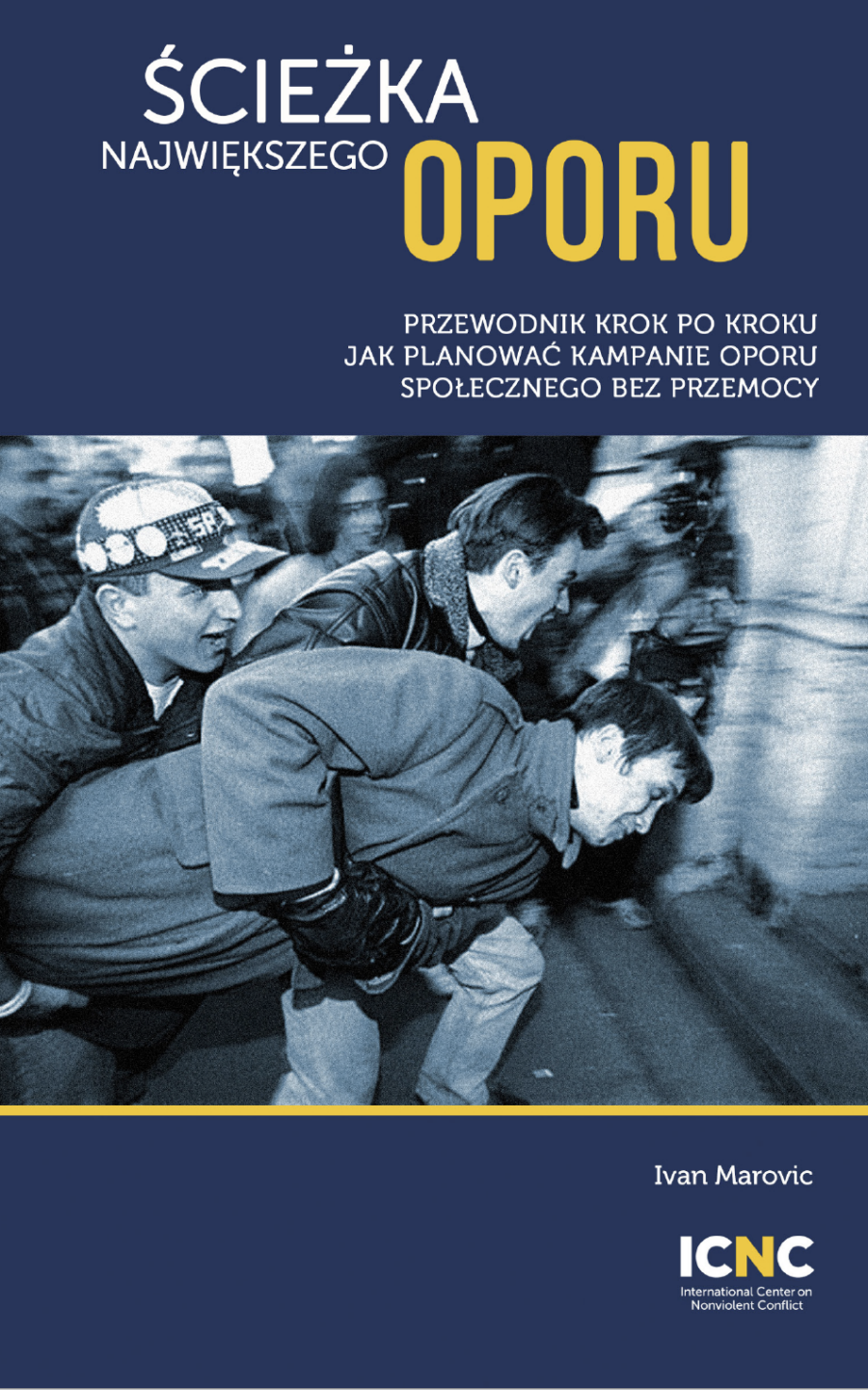 Ścieżka największego oporu. Przewodnik pokazujący krok po kroku jak planować kampanie oporu społecznego bez użycia przemocy jest praktycznym przewodnikiem dla aktywistów i organizatorów wszystkich szczebli, którzy chcieliby rozwinąć swoje działania w zakresie oporu bez przemocy w bardziej strategiczną kampanię o określonym terminie trwania. Prowadzi on czytelników przez proces planowania kampanii, dzieląc go na kilka etapów i zapewniając narzędzia i ćwiczenia do każdego z nich. Po zakończeniu lektury niniejszego podręcznika, czytelnicy będą dysponować wszystkim, co jest potrzebne do przeprowadzenia kolegów i koleżanek przez proces planowania kampanii. Proces ten – w formie przedstawionej w niniejszym przewodniku – zajmie od początku do końca około 12 godzin.
Ścieżka największego oporu. Przewodnik pokazujący krok po kroku jak planować kampanie oporu społecznego bez użycia przemocy jest praktycznym przewodnikiem dla aktywistów i organizatorów wszystkich szczebli, którzy chcieliby rozwinąć swoje działania w zakresie oporu bez przemocy w bardziej strategiczną kampanię o określonym terminie trwania. Prowadzi on czytelników przez proces planowania kampanii, dzieląc go na kilka etapów i zapewniając narzędzia i ćwiczenia do każdego z nich. Po zakończeniu lektury niniejszego podręcznika, czytelnicy będą dysponować wszystkim, co jest potrzebne do przeprowadzenia kolegów i koleżanek przez proces planowania kampanii. Proces ten – w formie przedstawionej w niniejszym przewodniku – zajmie od początku do końca około 12 godzin.
Przewodnik jest podzielony na dwie części. Pierwsza część określa i kontekstualizuje narzędzia planowania kampanii i ich cele. Wyjaśnia też logikę leżącą u podstaw tych narzędzi oraz to, jak można je modyfikować, by lepiej pasowały do kontekstu działania każdej grupy. Druga część zawiera konspekty zajęć poświęconych stosowaniu tych narzędzi, które można powielać i dzielić się nimi. Wyjaśnia także w jaki sposób wpisać te narzędzia w szerszy proces planowania.
El camino de la mayor resistencia: Una guía para planificar campañas noviolentas
Por: Ivan Marovic
Fecha de publicación: 2019
Descargar: Español | Inglés | Català | Portugués (Brasileño) | Francés | Polaco | Urdu
Comprar una copia impresa
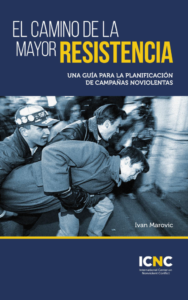 El camino de la mayor resistencia: Una guía para planificar Campañas noviolentas es una guía práctica para activistas y organizadores de todos los niveles que desean hacer crecer sus actividades de resistencia noviolenta en una Campaña más estratégica y de duración determinada. Es una guía para los lectores a través del proceso de planificación de la Campaña, dividiéndola en varios pasos y proporcionando herramientas y ejercicios para cada paso. Al terminar el libro, los lectores tendrán lo que necesitan para guiar a sus compañeros en el proceso de planificación de una Campaña. Se estima que este proceso, tal y como se describe en la guía, dura unas 12 horas de principio a fin.
El camino de la mayor resistencia: Una guía para planificar Campañas noviolentas es una guía práctica para activistas y organizadores de todos los niveles que desean hacer crecer sus actividades de resistencia noviolenta en una Campaña más estratégica y de duración determinada. Es una guía para los lectores a través del proceso de planificación de la Campaña, dividiéndola en varios pasos y proporcionando herramientas y ejercicios para cada paso. Al terminar el libro, los lectores tendrán lo que necesitan para guiar a sus compañeros en el proceso de planificación de una Campaña. Se estima que este proceso, tal y como se describe en la guía, dura unas 12 horas de principio a fin.
La guía está dividida en dos partes. La primera presenta y contextualiza las herramientas de planificación de Campañas y sus objetivos. También explica la lógica detrás de estas herramientas y cómo pueden ser modificadas para adaptarse mejor al contexto de un grupo en particular. La segunda parte proporciona planes de lecciones fácilmente reproducibles y compartibles para el uso de cada una de esas herramientas, y explora cómo integrar las herramientas en el más amplio proceso de planificación.
El camí de la major resistència: una guia per a la planificació de campanyes noviolentes
Por: Ivan Marovic
Fecha de publicación: 2019
Descarregar: Català | Español | Portuguès (Brasiler) | Inglés | Francès | Polonès | Urdu
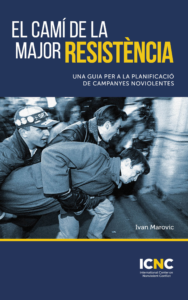 El camí de la major resistència: Una guia per planificar Campanyes noviolentes és una guia pràctica per activistes i organitzadors de tots els nivells que volen fer créixer les seves activitats de resistència noviolenta, amb unes Campanyes més estratègiques i de durada determinada. És una guia per als lectors a través del procés de planificació de les Campanyes, dividint-les en diversos passos i proporcionant eines i exercicis per a cada pas. A l’acabar el llibre, els lectors tindran el què necessiten per guiar els seus companys/es en el procés de planificació d’una Campanya. S’estima que aquest procés, tal com es descriu a la guia, dura unes 12 hores de principi a fi.
El camí de la major resistència: Una guia per planificar Campanyes noviolentes és una guia pràctica per activistes i organitzadors de tots els nivells que volen fer créixer les seves activitats de resistència noviolenta, amb unes Campanyes més estratègiques i de durada determinada. És una guia per als lectors a través del procés de planificació de les Campanyes, dividint-les en diversos passos i proporcionant eines i exercicis per a cada pas. A l’acabar el llibre, els lectors tindran el què necessiten per guiar els seus companys/es en el procés de planificació d’una Campanya. S’estima que aquest procés, tal com es descriu a la guia, dura unes 12 hores de principi a fi.
La guia està dividida en dues parts. La primera part, presenta i contextualitza les eines de planificació de Campanyes i els seus objectius. També explica la lògica darrere d’aquestes eines, i com poden ser modificades per adaptar-les millor al context d’un grup en particular. La segona part, proporciona plans de lliçons fàcilment reproduïbles i compartibles per a l’ús de cadascuna d’aquestes eines, i explora com integrar les eines en el més ampli procés de planificació.
O caminho da maior resistência
Autor: Ivan Marovic
Tradutor: João Vicente de Paulo Júnior, Abril 2020
Editora: Maíra Irigaray
Data da publicação: Abril 2020
Baixar: Português (brasileiro) | Inglês | Espanhol | Catalão | Francês | Polonês | Urdu
Compre uma Cópia
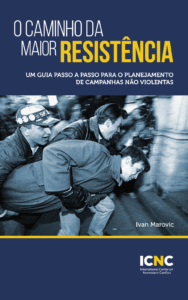 O Caminho da Maior Resistência: Um Guia Passo a Passo para o Planejamento de Campanhas Não-Violentas é um guia prático para ativistas e organizadores em todos os níveis que desejam transformar suas atividades de resistência não-violenta em uma campanha mais estratégica, com prazo fixo. Orienta os leitores através do processo de planejamento da campanha, dividindo-o em várias etapas e fornecendo ferramentas e exercícios para cada etapa. Ao terminar o livro, os leitores dispõem do que precisam para orientar seus pares no processo de planejamento de uma campanha. Estima-se que esse processo, conforme descrito no guia, leve cerca de 12 horas do início ao fim.
O Caminho da Maior Resistência: Um Guia Passo a Passo para o Planejamento de Campanhas Não-Violentas é um guia prático para ativistas e organizadores em todos os níveis que desejam transformar suas atividades de resistência não-violenta em uma campanha mais estratégica, com prazo fixo. Orienta os leitores através do processo de planejamento da campanha, dividindo-o em várias etapas e fornecendo ferramentas e exercícios para cada etapa. Ao terminar o livro, os leitores dispõem do que precisam para orientar seus pares no processo de planejamento de uma campanha. Estima-se que esse processo, conforme descrito no guia, leve cerca de 12 horas do início ao fim.
La voie de la plus grande résistance: Un guide étape par étape pour la planification des campagnes non violentes
Auteur: Ivan Marovic
Traducteur: JPD Systems LLC, Avril 2020
Designer: Joe García
Éditeurs: Hardy Merriman et Amber French
Télécharger: Français | Portugais (brésilien) | Anglais | Espagnol | Catalan | Polonais | Urdu
Acheter une copie papier
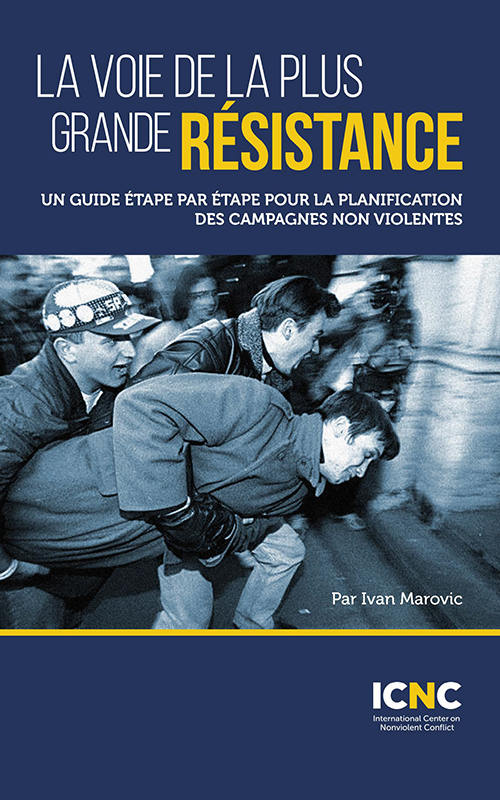 La voie de la plus grande résistance: un guide étape par étape pour la planification des campagnes non violentes est destiné aux activistes et organisateurs de tous niveaux, qui souhaitent faire évoluer leurs activités de résistance non violente vers des campagnes plus stratégiques à durée déterminée. Il guide ses lecteurs à travers le processus de planification d’une campagne. Il en explique les différentes étapes et propose pour chacune d’elles des outils et des exercices. Au terme du Guide, les lecteurs auront acquis ce dont ils ont besoin pour conduire leurs pairs à travers le processus de planification d’une campagne. Tel qu’il est expliqué dans le guide, ce processus devrait prendre environ 12 heures du début à la fin.
La voie de la plus grande résistance: un guide étape par étape pour la planification des campagnes non violentes est destiné aux activistes et organisateurs de tous niveaux, qui souhaitent faire évoluer leurs activités de résistance non violente vers des campagnes plus stratégiques à durée déterminée. Il guide ses lecteurs à travers le processus de planification d’une campagne. Il en explique les différentes étapes et propose pour chacune d’elles des outils et des exercices. Au terme du Guide, les lecteurs auront acquis ce dont ils ont besoin pour conduire leurs pairs à travers le processus de planification d’une campagne. Tel qu’il est expliqué dans le guide, ce processus devrait prendre environ 12 heures du début à la fin.
Ce guide comprend deux parties. La première présente et contextualise les outils de planification d’une campagne et leurs objectifs. Elle explique également la logique qui sous-tend ces outils et la manière dont on peut les modifier pour les adapter au contexte d’un groupe particulier. La seconde partie fournit des fiches pédagogiques faciles à reproduire et à partager pour utiliser chacun de ces outils, et explique comment intégrer ces outils dans le processus de planification.
Freedom Over the Airwaves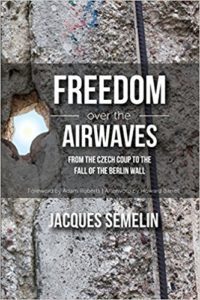
By: Jacques Semelin
English publication of La liberté au bout des ondes, 2nd edition
Translated by Elizabeth Libbrecht
Foreword by Adam Roberts
Afterword by Howard Barrell
Original (French) publication: Nouveau Monde Editions 2009
English publication: ICNC Press, February 2017
Free Download
Purchase a Print Copy
Purchase an e-book (Nook | Kindle)
This book on the relationship between communications and nonviolent resistance captures a new understanding of the events that led ultimately to the fall of the authoritarian system in communist Central and Eastern Europe in 1989. In particular, it analyzes history-making acts of resistance and the movements that propelled them in Budapest in 1956, Prague in 1968, Gdansk in 1980 and East Berlin in 1989, in their own historical continuum.
Œuvrer pour la paix Stratégies intégrées de résistance civile et de construction de la paix
Par: Veronique Dudouet
Traduction: Claudia McKenny Engström, February 2020
Télécharger: Anglais | Français
Acheter des copies: Anglais | Français

Ce rapport explore les idées et pratiques complémentaires de la résistance civile et de la construction de la paix, opérant à différentes étapes de la transformation du conflit. Les deux stratégies s’opposent à la violence sous toutes ses formes, et cherchent à atteindre une paix juste grâce à des moyens pacifiques. Cependant, elles adoptent des approches différentes, notamment dans leur analyse des racines de la violence et dans leur manière de répondre au conflit. Se basant sur un nombre d’études de cas, ce rapport vise à aider praticiens et chercheurs à comprendre comment l’intégration de ces deux stratégies peut soutenir la « mise en oeuvre de la paix ».
El Poder de No Desplazarse: Resistencia No-violenta Contra Grupos Armados en Columbia
Por: Juan Masullo
Traducción: ICNC, November 2016
Volume editor: Amber French
Series editor: Maciej Bartkowski
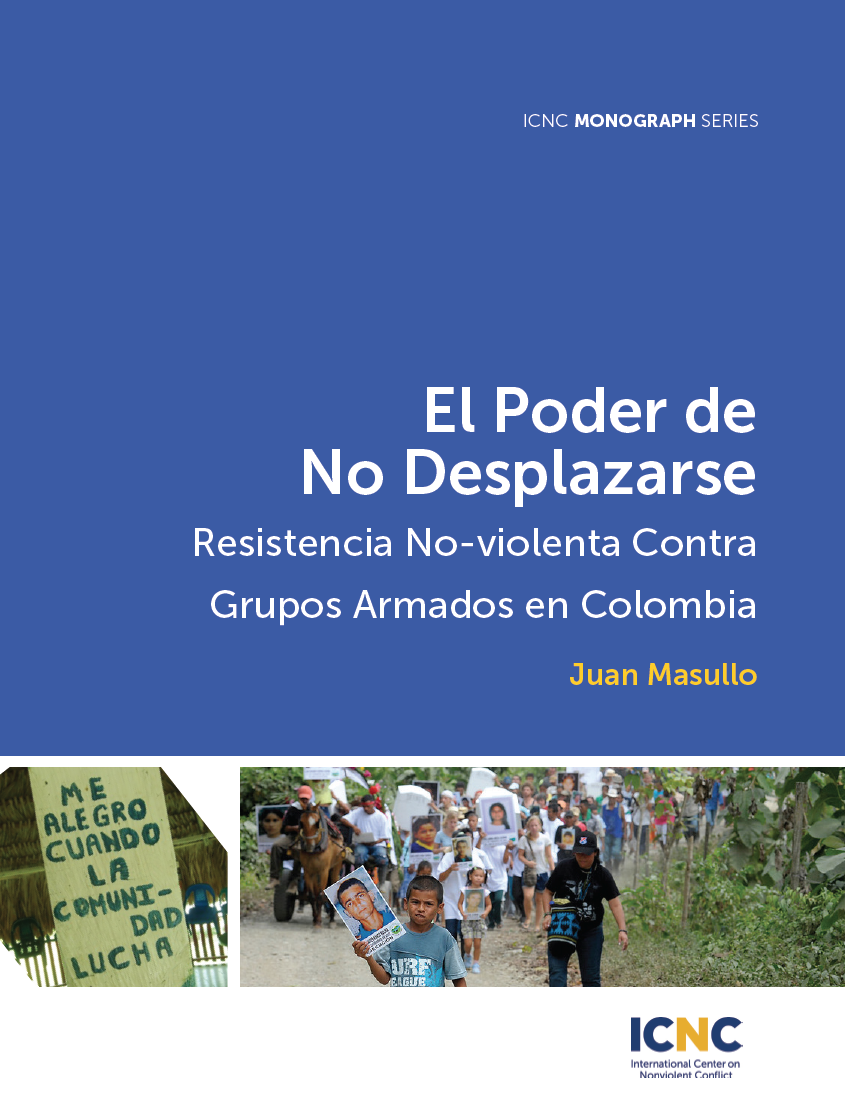 Cuando los grupos armados llegan a sus territorios, la población civil por lo general colabora con el grupo armado más fuerte o se desplaza. Sin embargo, los civiles no están obligados a elegir entre estas dos opciones. Desafi ar a los grupos armados a través de auto-organización en formas noviolentas de no-cooperación es también una posibilidad. Esta monografía explora esta opción en el contexto del confl icto armado interno colombiano a través de la experiencia de resistencia civil de los campesinos de la Comunidad de San José de Apartadó.
Cuando los grupos armados llegan a sus territorios, la población civil por lo general colabora con el grupo armado más fuerte o se desplaza. Sin embargo, los civiles no están obligados a elegir entre estas dos opciones. Desafi ar a los grupos armados a través de auto-organización en formas noviolentas de no-cooperación es también una posibilidad. Esta monografía explora esta opción en el contexto del confl icto armado interno colombiano a través de la experiencia de resistencia civil de los campesinos de la Comunidad de San José de Apartadó.
在非暴力运动中非暴力纪律的保持与破坏(终版)
乔纳森·平克尼
Making of Breaking Nonviolent Discipline — Chinese
བོད་མིའི་འཚེ་མེད་ཞི་བའི་འཐབ་རྩོད། ཐབས་བྱུས་དང་བྱུང་རབས་ཀྱི་དབྱེ་ཞིབ་ཅིག
ཕྱི་ལོ་༢༠༠༨ ལོའི་བོད་མིའི་སྒེར་ལངས་ཀྱི་སྐབས་སུ། བོད་མིའི་འཐབ་རྩོད་དེ་དྲག་ཕྱོགས་སུ་སྐྱོད་ཀྱི་ཡོད་ཚུལ་རྒྱ་ནག་དྲིལ་ བསྒྲགས་ཀྱིས་བསྐུལ་བའི་འདུ་ཤེས་དེ་ལས་ལ
ཕྱི་ལོ་༢༠༠༨ ལོའི་བོད་མིའི་སྒེར་ལངས་ཀྱི་སྐབས་སུ། བོད་མིའི་འཐབ་རྩོད་དེ་དྲག་ཕྱོགས་སུ་སྐྱོད་ཀྱི་ཡོད་ཚུལ་རྒྱ་ནག་དྲིལ་བསྒྲགས་ཀྱིས་བསྐུལ་བའི་འདུ་ཤེས་དེ་ལས་ལྡོག་སྟེ། དཔྱད་བརྗོད་འདིས་ཕྱི་ལོ་༡༩༥༠ ནས་བཟུང་། བོད་མིའི་ལས་འགུལ་དེ་འཚེ་མེད་ཞི་བའི་འགོག་རྒོལ་གྱི་ཕྱོགས་སུ་ཤུགས་ཆེར་ཕྱིན་ཡོད་པ་སྟོན་གྱི་ཡོད། ཆེད་རྩོམ་འདིས་གྲགས་ཆེ་བའི་བོད་མིའི་སྒེར་ལངསཀྱི་དུས་ཡུན་གསུམ་ལ་དཔྱད་ཞིབ་ཀྱིས་དེ་དག་གི་བརྗོད་གཞི་དང་། དགོས་དོན། ཀླན་ཀ། ཐབས་བྱུས། འཐབ་རྩལ། ཤུགས་རྐྱེན་བཅས་གཙོ་བོ་ཁག་ལ་དཔྱད་པ་བྱེད་ཀྱི་ཡོད།
The Tibetan Nonviolent Struggle: A Strategic and Historical Analysis — Tibetan
